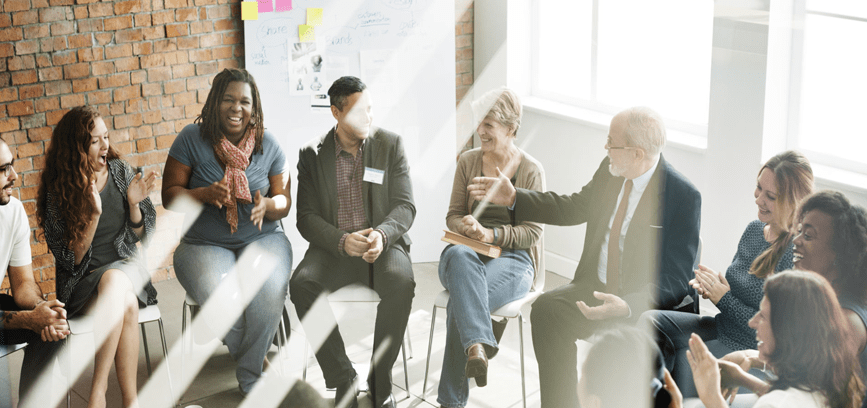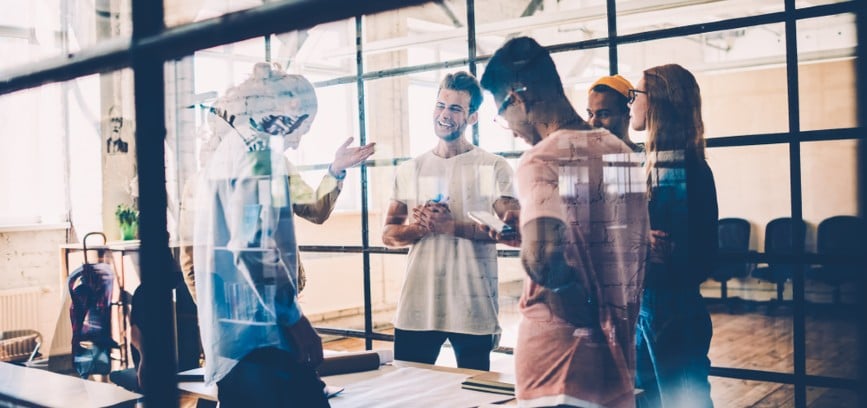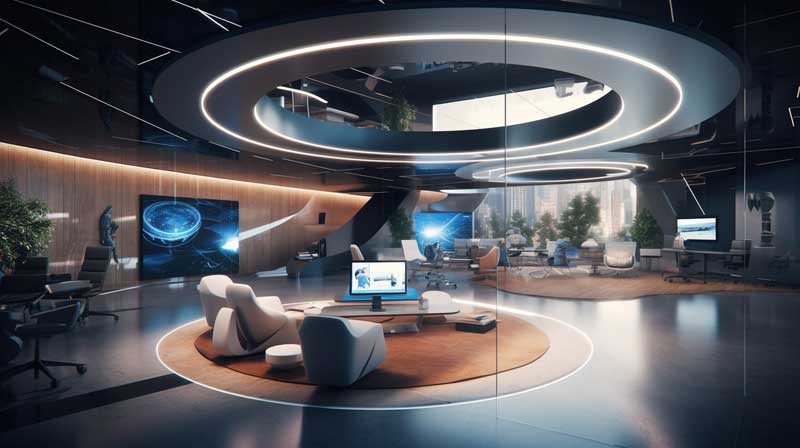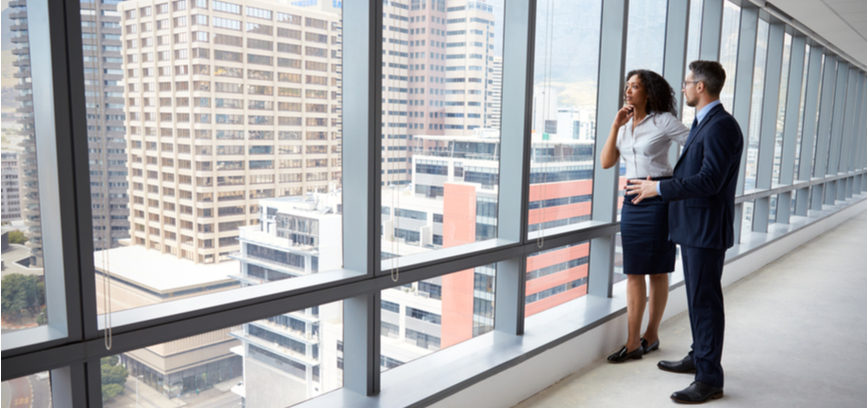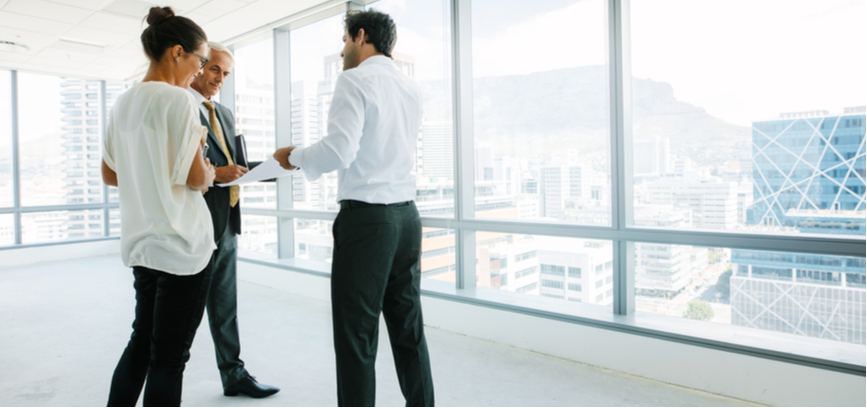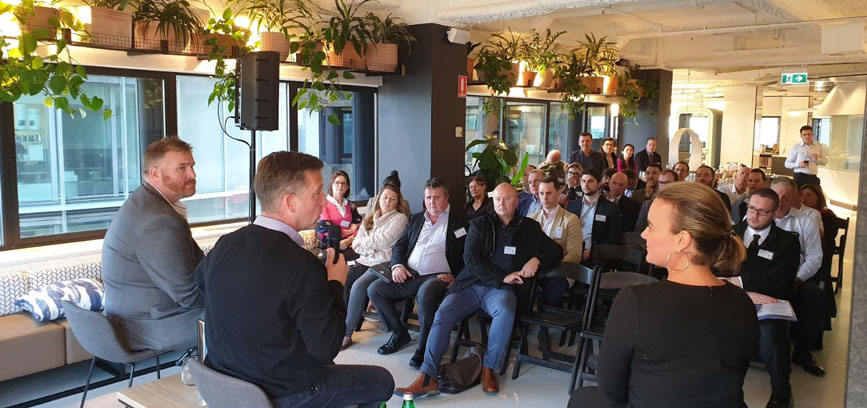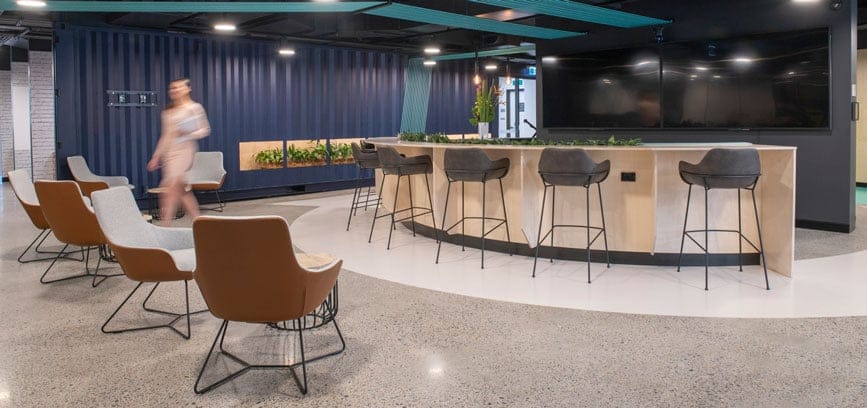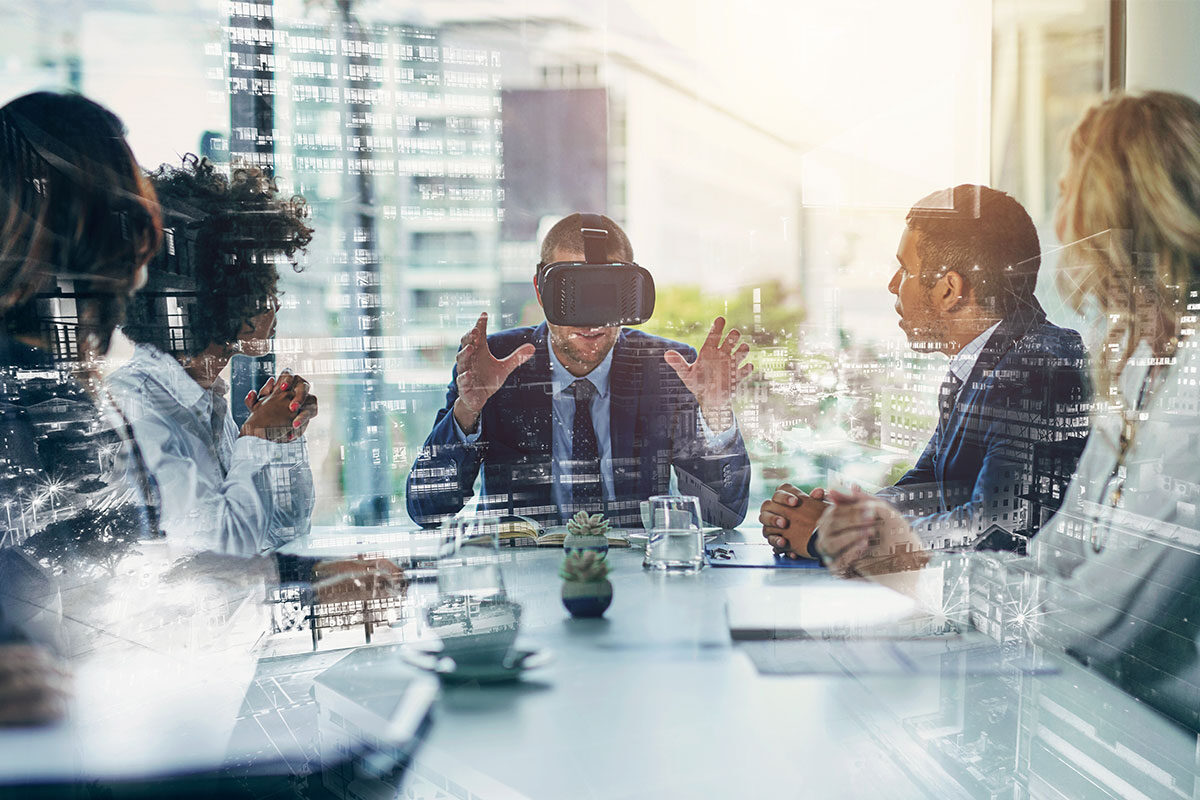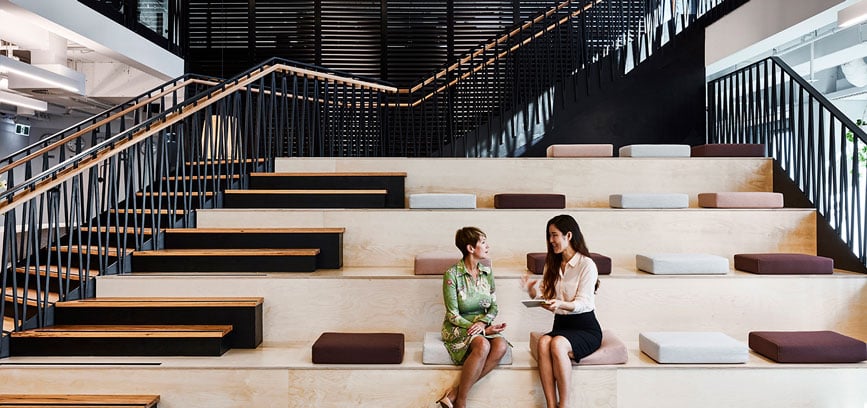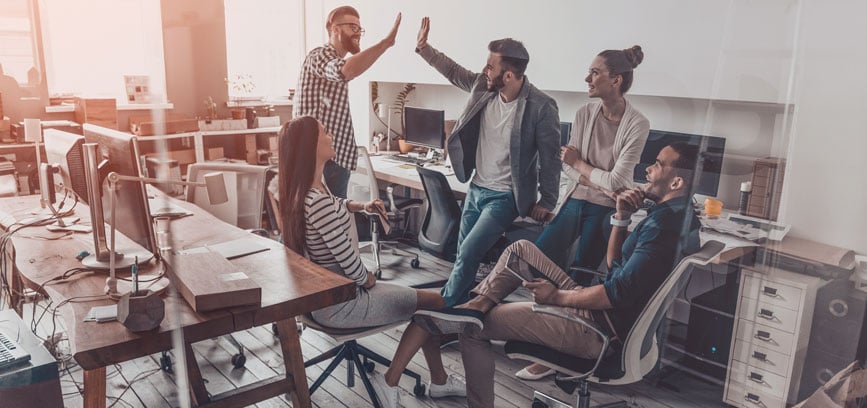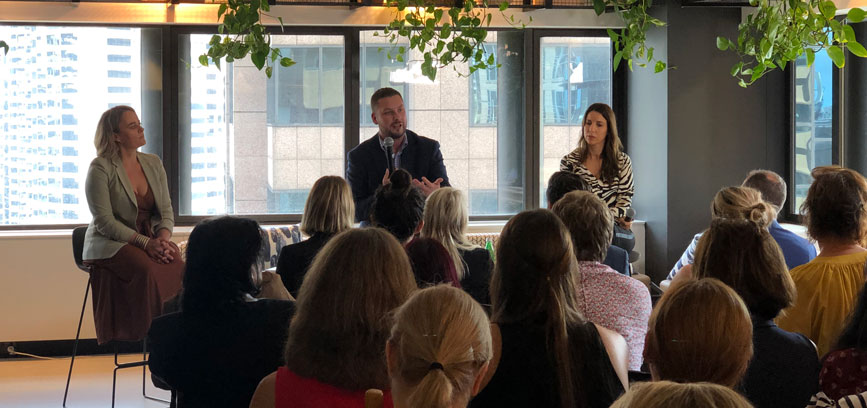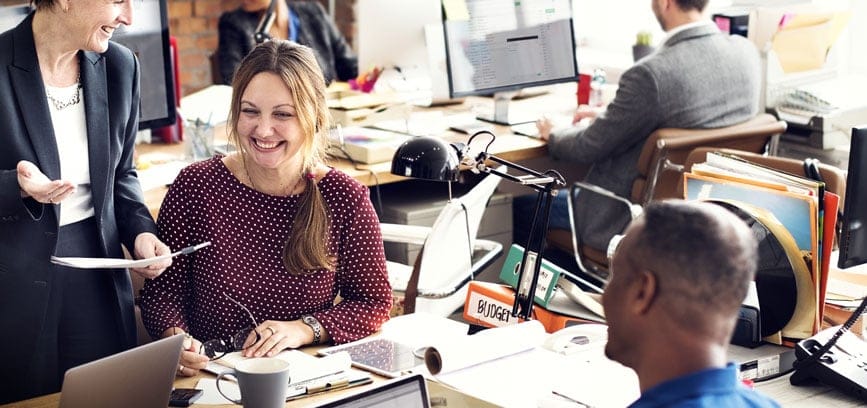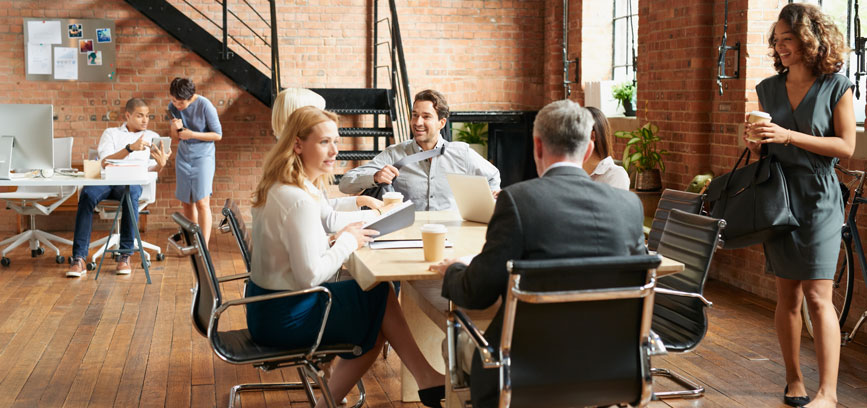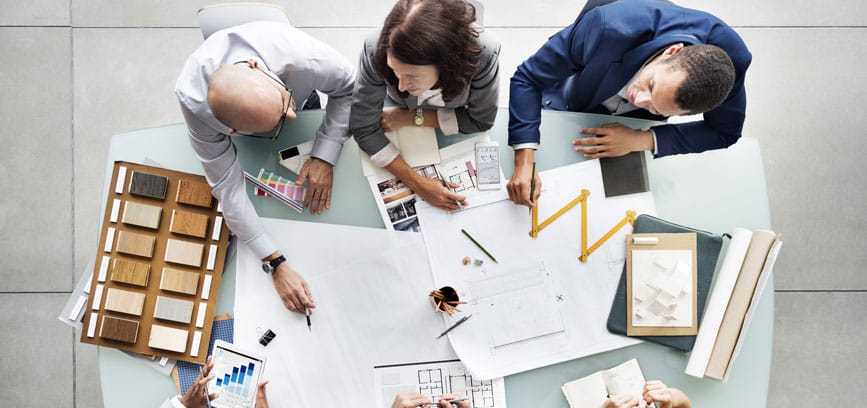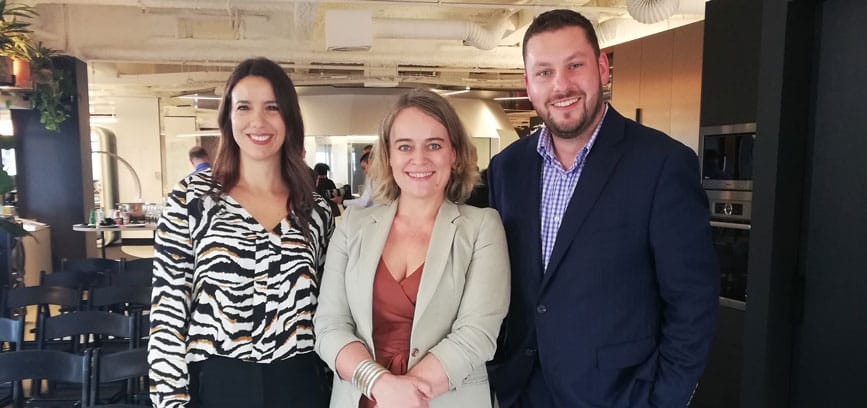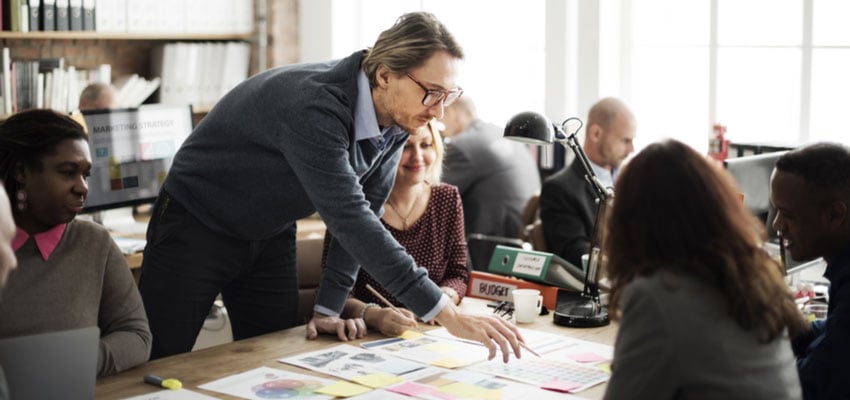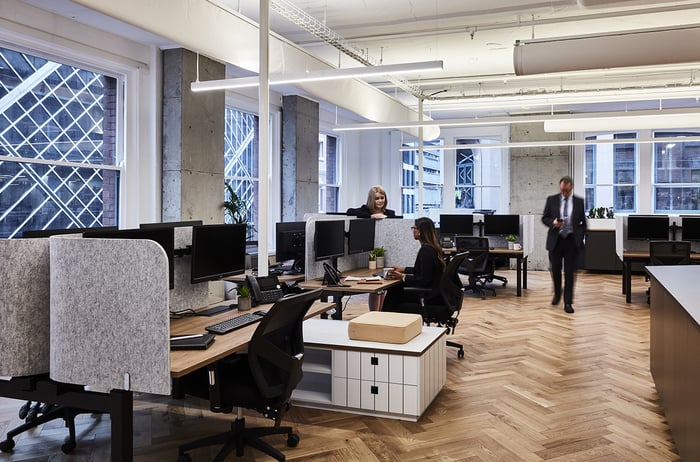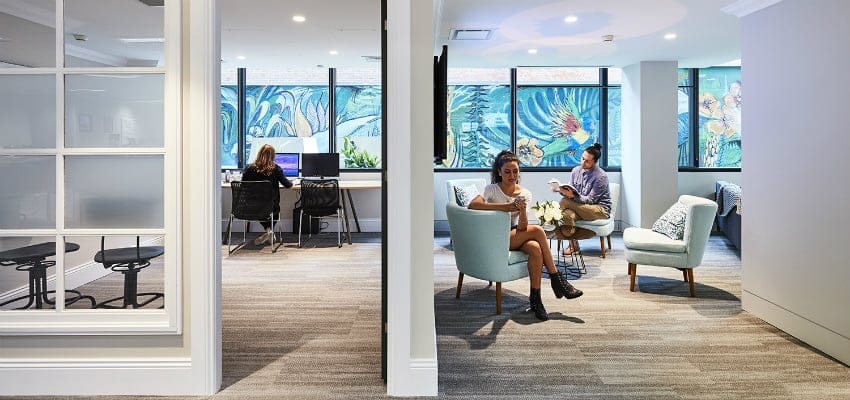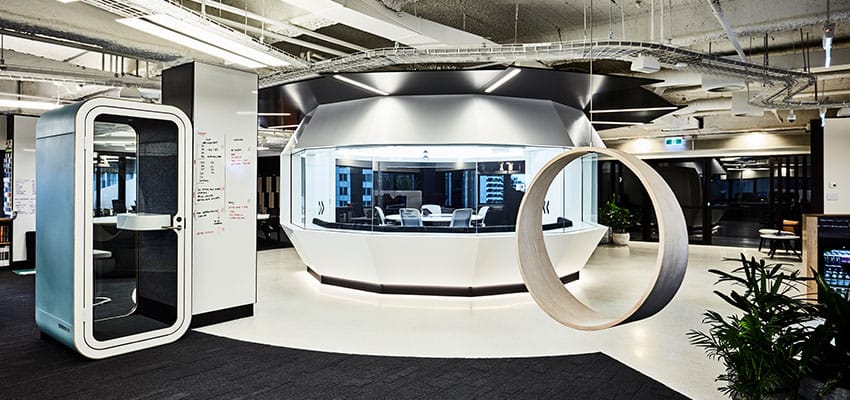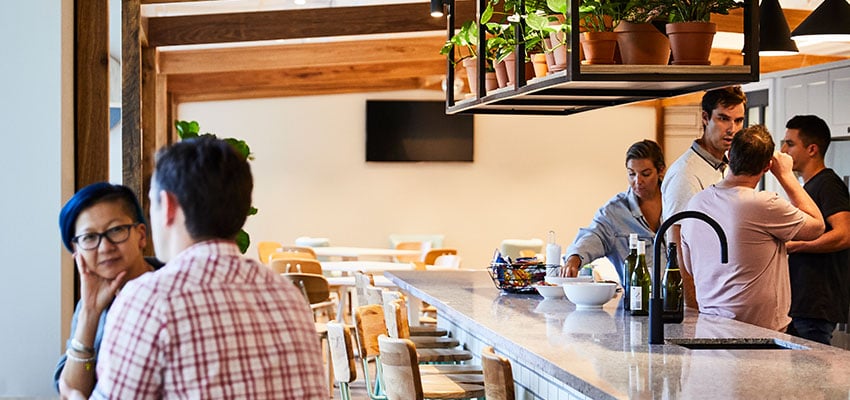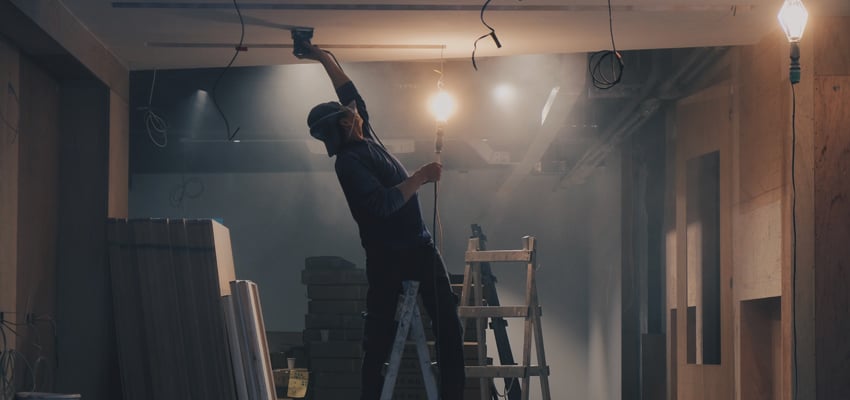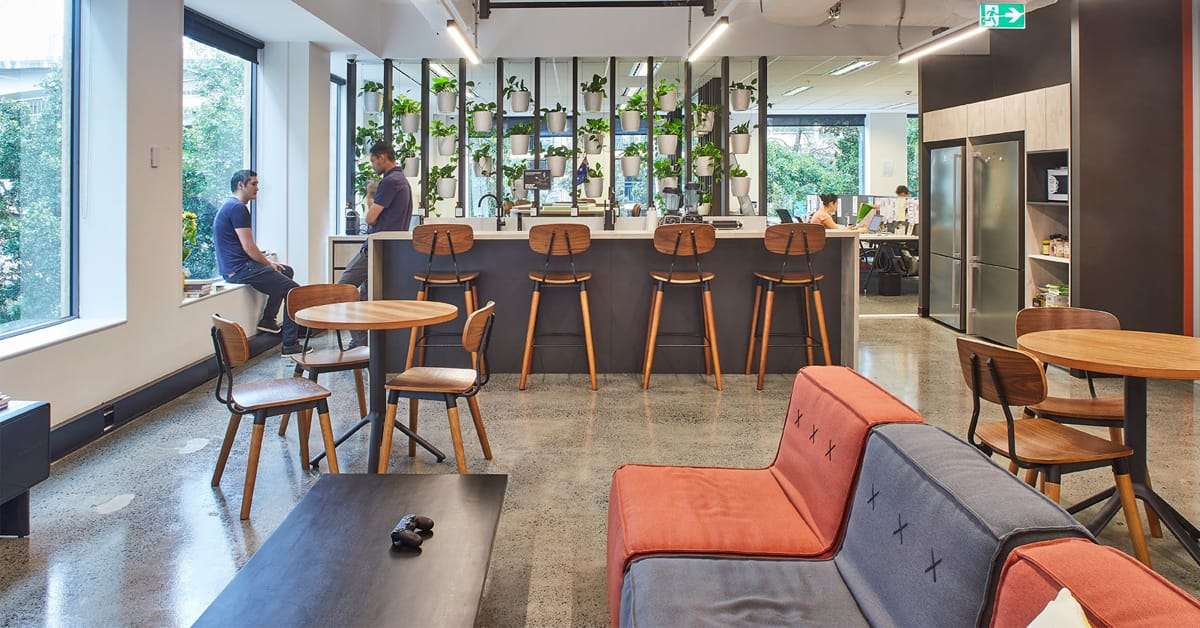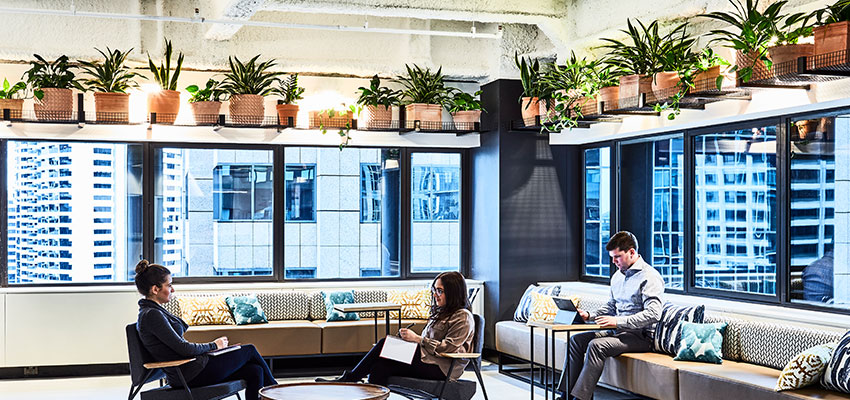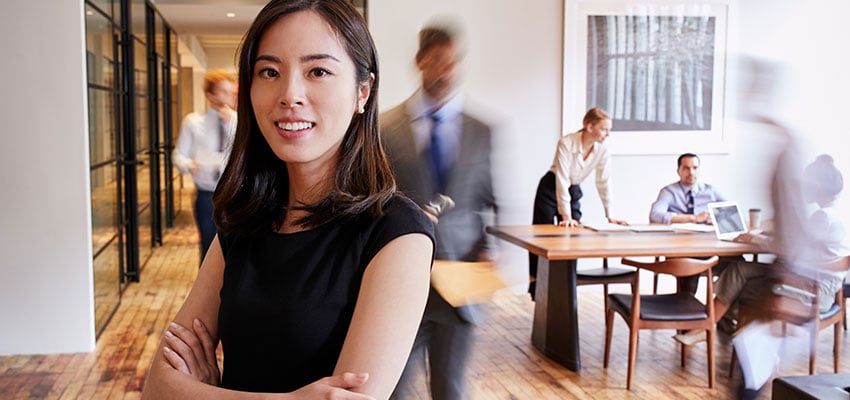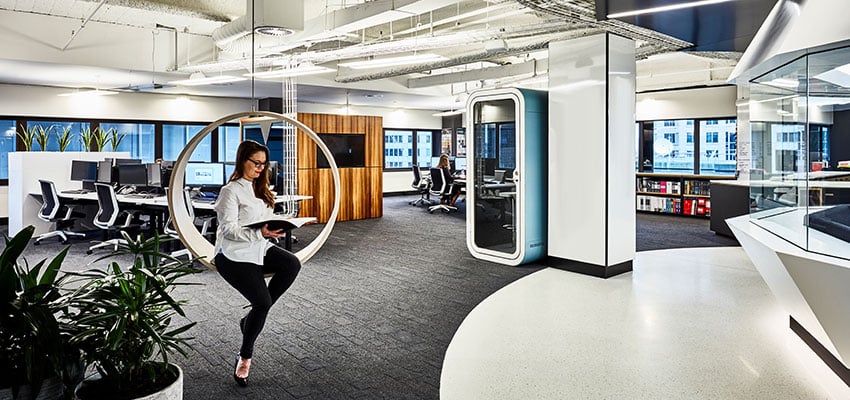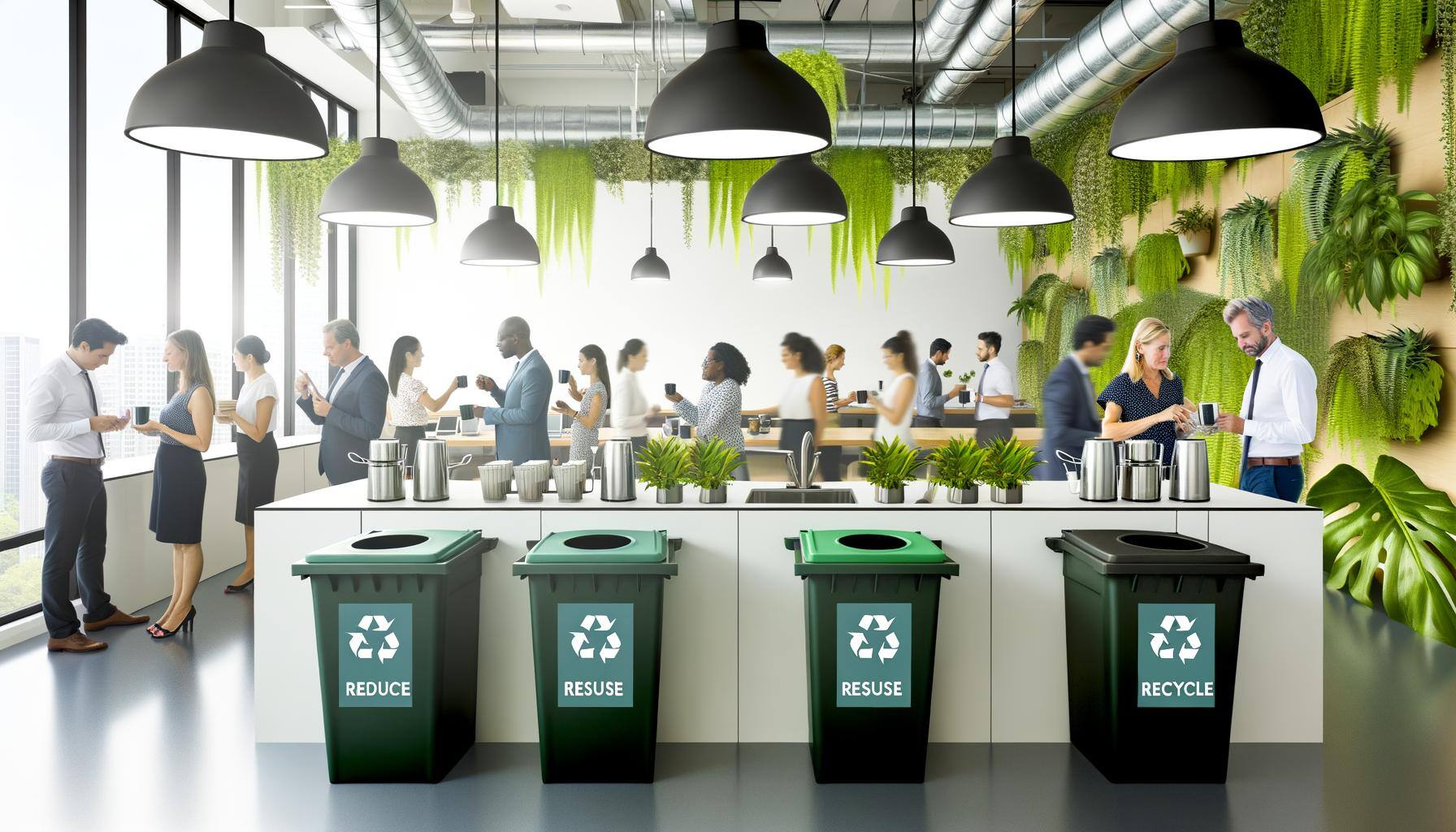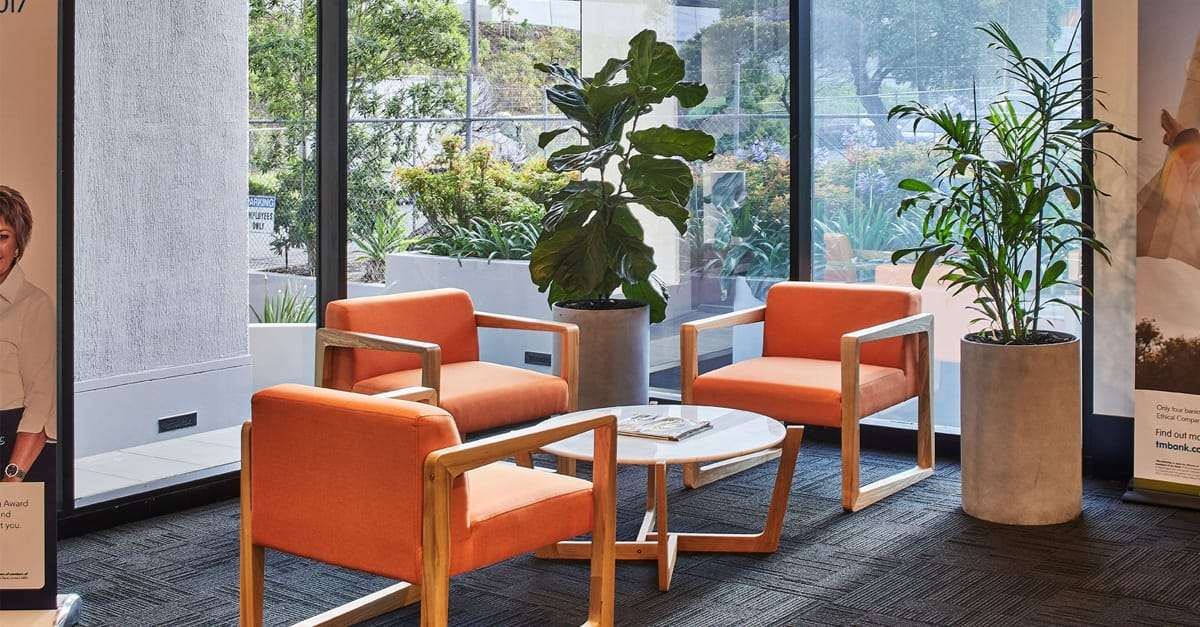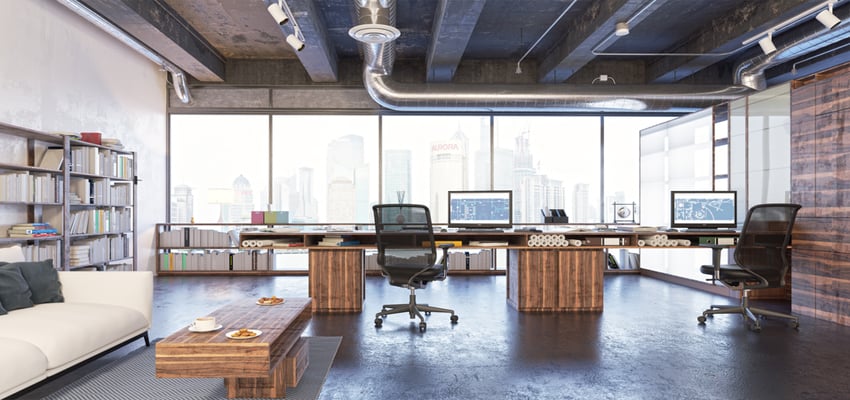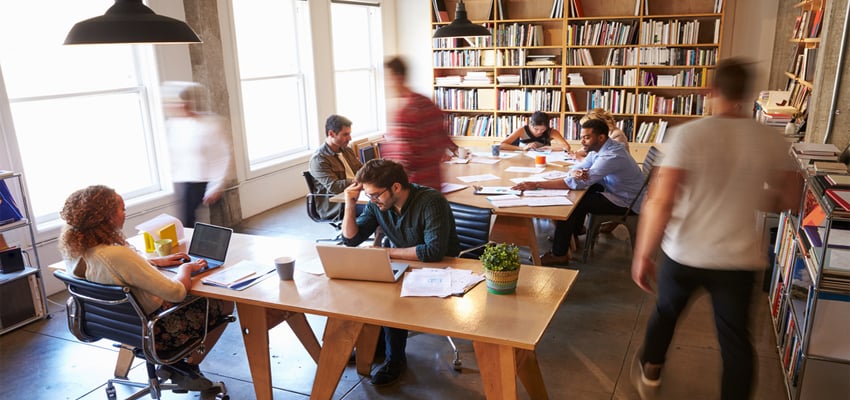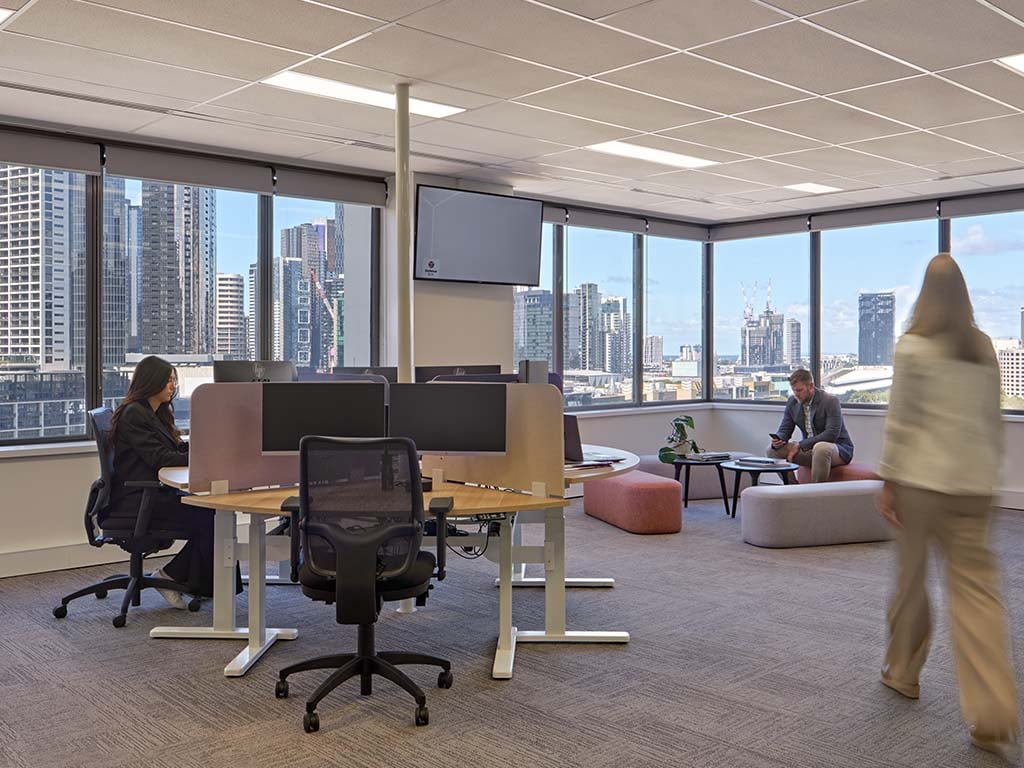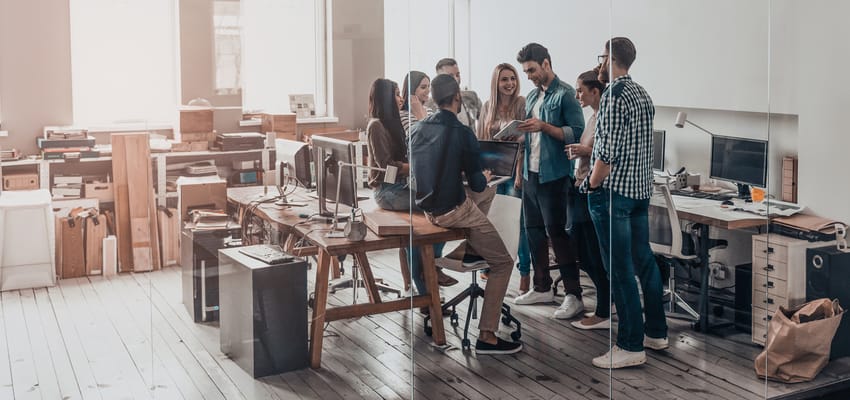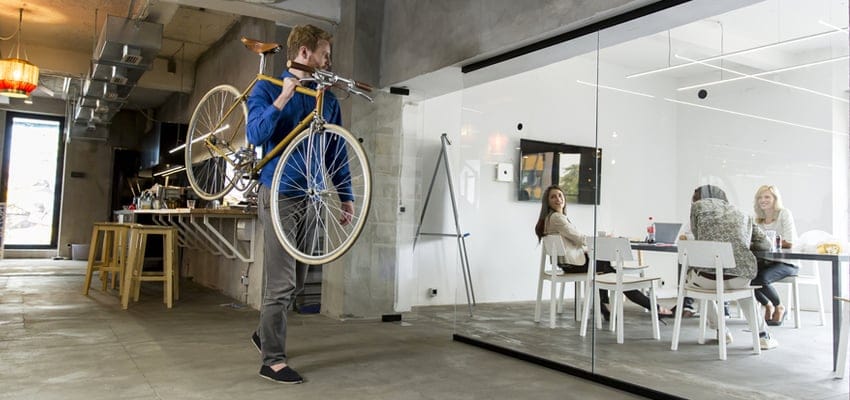A meeting isn’t just a meeting anymore. In a hybrid working climate where people are working from home as well as in the office, you can’t simply just book a meeting room OR send out an invite to a Zoom call. Nor is it as easy to moderate participation and make sure everyone feels included.
So how do you host and facilitate a successful hybrid meeting?
To answer this question and more, we spoke with Trevor Ambrose, a sales training coach helping businesses and individuals in Australia and internationally to improve their speaking and presenting skills. Trevor will share the best practices for both facilitators and participants in running engaging, inclusive and productive hybrid meetings. We also touch on some practical tips to ensure your physical workplace can effectively support meetings in the new hybrid working environment.
From fully remote to hybrid
When the rapid uptake of working remotely began, there was uncertainty on how to proceed. According to Trevor, many were ‘technically challenged’ and had to learn and adjust to the new ways of working. “They didn’t know how to switch on. People were still fumbling around not knowing if their mic was on or off, how to switch on their camera, and even how to set up an account for video conferencing platforms.”
After several months working from home, some employees were getting ‘Zoomed out’ and overwhelmed by the constant virtual meetings. It became evident working full-time remotely is not going to be right for everyone or every role or business.
The need to bond and have physical connection with friends and colleagues signals that hybrid working will be the norm moving forward for most workplaces. “Even post COVID, it’s never going to go back to how it was where we would always do the physical face to face sort of meetings, but we’ll probably be doing a bit of both.”
Hybrid meeting best practices for the facilitator
With the higher risk of miscommunication and employee exclusion, managing hybrid meetings becomes more challenging than when everyone is physically present in the same room or all coming in virtually. Great facilitation is needed. One person, whether a team member or another participant, should be assigned to host or facilitate the hybrid meeting. Here are some best practice tips for the facilitator to help guide the meeting and keep things on track:
Plan an ice breaker or pre-meeting chat
Mandy Holloway, Courageous Leadership Facilitator, says that one way to get everyone comfortable at the start of a hybrid meeting is to have an ice breaker or a pre-meeting chat. This will get people settled and test their audio and video connections. More importantly, ice breakers can help remote participants feel included from the very beginning. You can start the meeting with some informal chats about the weekend or about a recent event. A short poll or quiz can also help start things off. But make sure your ice breaker is quick and doesn’t eat up the time for the official meeting.
Use people’s names
Like in a face to face meeting, it’s important to know every participant by name. In a hybrid meeting, it’s even more essential to know the names of participants coming in remotely. Trevor mentioned he writes down the names of remote attendees on a whiteboard. “So when I talk to people in the room, I always make sure to say ‘hi’ and ask them ‘what’s your take on this?’ And I would constantly bring them into the conversation so that they don’t feel excluded.”
It’s easy for in-person participants to dominate meeting discussions. Knowing people’s names helps the facilitator to draw remote attendees in, keep them engaged, and ensure they have equal participation in every conversation.
Be interactive
Trevor highlighted the importance of making the hybrid meeting very interactive. If not, participants, especially the ones dialling in, will tune out and focus on other things in front of them. “As a facilitator, if I notice you doing something else or getting disinterested, I will begin to ask you direct questions to bring you back in. I will fish you back into that meeting, so that people will see I’m alert.”
You can also use some interactive tools like polls, Q&A or virtual whiteboards to keep participants engaged and focused. Facilitators can ask questions and have attendees answer through the chat box function within the virtual meeting platform.
Make the invite clear and stay on schedule
As a facilitator, it’s important to schedule the meeting properly for every participant. Make sure to send the invitation days ahead of time with the meeting room details for in-person attendees and the correct link to those joining virtually.
“Outline the purpose of the meeting and send a detailed agenda in advance. This can help especially when there’s more people attending. If there’s no clear direction in the meeting, it just fumbles around, and people get bored,” says Trevor.
Be prepared
This sounds obvious, but as a facilitator, you need to be prepared. You have to spend some time planning the meeting. Especially in a hybrid setting, you need to carefully plan an agenda and how to achieve the objectives of the meeting. It may also be worth readying some questions or discussion points to get conversations going. If you are doing some interactive activities, make sure remote participants can join in and have equal participation.
Before starting the meeting, be prepared with some guidelines and rules to guide participants. Set the rules about asking and answering questions, muting and unmuting, and who’s presenting and when. As a facilitator, you also need to be comfortable with the controls when sharing your screen, recording the session, and other technical aspects of the meeting platform.
Get your set up right
Nothing is more frustrating in a hybrid or virtual meeting than losing your audio or video in the middle of an important discussion. As a facilitator, take the time to test the audio-visual set-up for both the in-person and remote attendees. It might be worth doing a dry run to make sure connections are running smoothly, especially before a big and important meeting.
If you have a speaker or presenter, it’s essential to test their camera and microphone to make sure everyone, including remote participants, are able to see and hear them clearly. It’s also important to have the presenter position themselves properly – by having the camera at a good angle, centring themselves, and ensuring there are no distractions in the background. Trevor says, “I make sure that I’m positioned in a way that everybody can see me and I can see those people dialling in as well on a big screen. And that they can talk to me.”
Best practices for hybrid meeting participants
Hosting a successful meeting is not just dependent on the facilitator. The participants, whether attending in person or remotely, need to do their part.
Dress the part
“People need to step up more in professional meetings. Some people just look weary and tired with their body language, their posture and their attire. They need to realise that when they attend a meeting, even virtually, they are representing the brand of their company.”
Trevor encourages people to present and speak professionally, to look professional, and to have a professional demeanour when meeting with team members and clients.
Organisational leaders also need to set the expectations. They have to set policies for virtual meetings, communicate those policies, and even train employees how to look and sound professional. “I think companies should have a strong protocol. When you jump online, what is your dress code? If we’re going to do that in person, we might as well just do it virtually as well.”
Turn on your camera and get comfortable
Trevor noticed that some participants have been turning off their cameras during meetings. “This creates a barrier between people when you run hybrid meetings and presenting skills. You can’t see people’s reactions.”
Turning on your camera is essential in virtual or hybrid meetings. Seeing people’s faces, even virtually, establishes connection and trust. Similar to in-person meetings, it helps to see body language and understand when participants are engaged and focused or just getting bored and distracted.
Stay engaged
“I think the biggest problem is silent attendees. People are just sitting there and they just attend but they’re not engaged. They’re not actively talking.”
As a participant, you need to be involved in the meeting and ‘stay in the moment.’ Be engaged and don’t be afraid to speak up. Also, try to avoid in person cross-talks and impromptu side conversations as they can be distracting and confusing for remote attendees.
How your physical workplace can support hybrid meetings
Hybrid combines the physical and virtual environments. This means your physical workspace plays an important role in enabling and supporting hybrid meetings. Here are some things to consider when planning your workplace in a hybrid working environment.
Collaborative spaces for digital inclusivity
In a hybrid working environment, remote workers want to feel connected and that they are part of the team. It’s essential to design the physical workplace to have open collaborative spaces where both onsite and remote workers can work together as if they are sitting next to each other in the office. These collaborative spaces need to enable seamless connection to digital tools and virtual meeting platforms.
Axiom recently worked with Cisco Meraki to design and build workspaces that bring people together, which included a coffee bar area and tiered seating purpose-built for the monthly dial-in with San Francisco. These workspaces can also be used by onsite staff to meet and collaborate with remote colleagues, thereby enhancing workplace culture and community, even in a hybrid environment.
The right AV technology
Trevor cannot stress enough the importance of having the right technology to enable successful hybrid meetings. For best virtual connections in meeting rooms, make sure to invest in video conferencing and audio equipment. This includes quality web cameras, TV screens, microphones, speakers and soundbars. Also invest in digital tools that facilitate wireless content sharing, collaboration and communication. Make sure the tools and technology allow seamless integration so “people can just walk in, plugin, and boom, it’s on-screen.”
Lastly, it’s important to train everyone on the meeting technology. Help employees to get comfortable and familiarise themselves with all the technology in place – from logging onto the platform to switching screens and sharing content.
Acoustics
Aside from the AV technology, acoustics is also an important consideration when it comes to hybrid meetings. Poor meeting room acoustics can let external noise and other distractions come in – making it difficult for participants to concentrate and be productive. So, make sure to test noise levels in meeting rooms and invest in better sound insulation.
In addition, hard surfaces like glass walls, whiteboards and large screens can have a negative impact on room acoustics. One way to solve this problem is to add sound-absorbing material to the walls. This prevents noise from bouncing around the room and creating echoes that make speech and conversations difficult to understand.
If you want to learn more about hosting successful hybrid meetings, get in touch with Trevor Ambrose.
You can also read our guide to the future of work, and understand how to adapt to the fundamental changes occurring across workplaces in Australia.

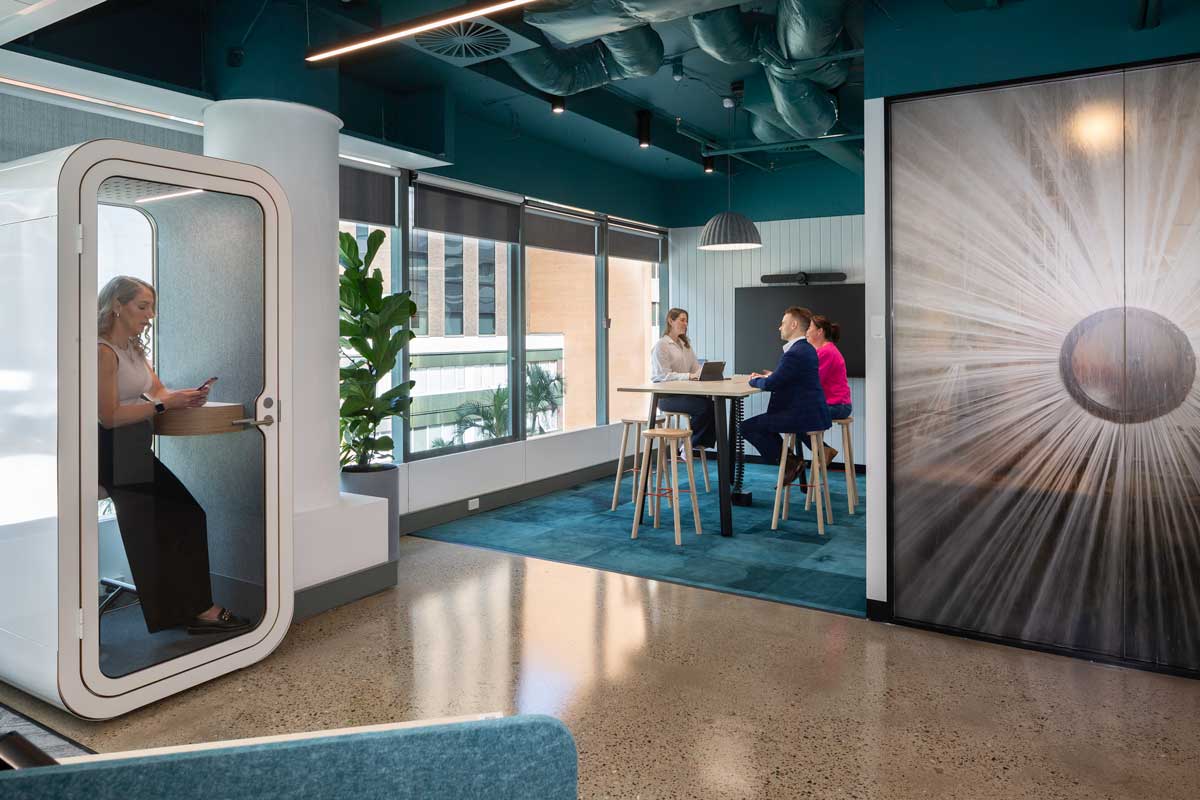
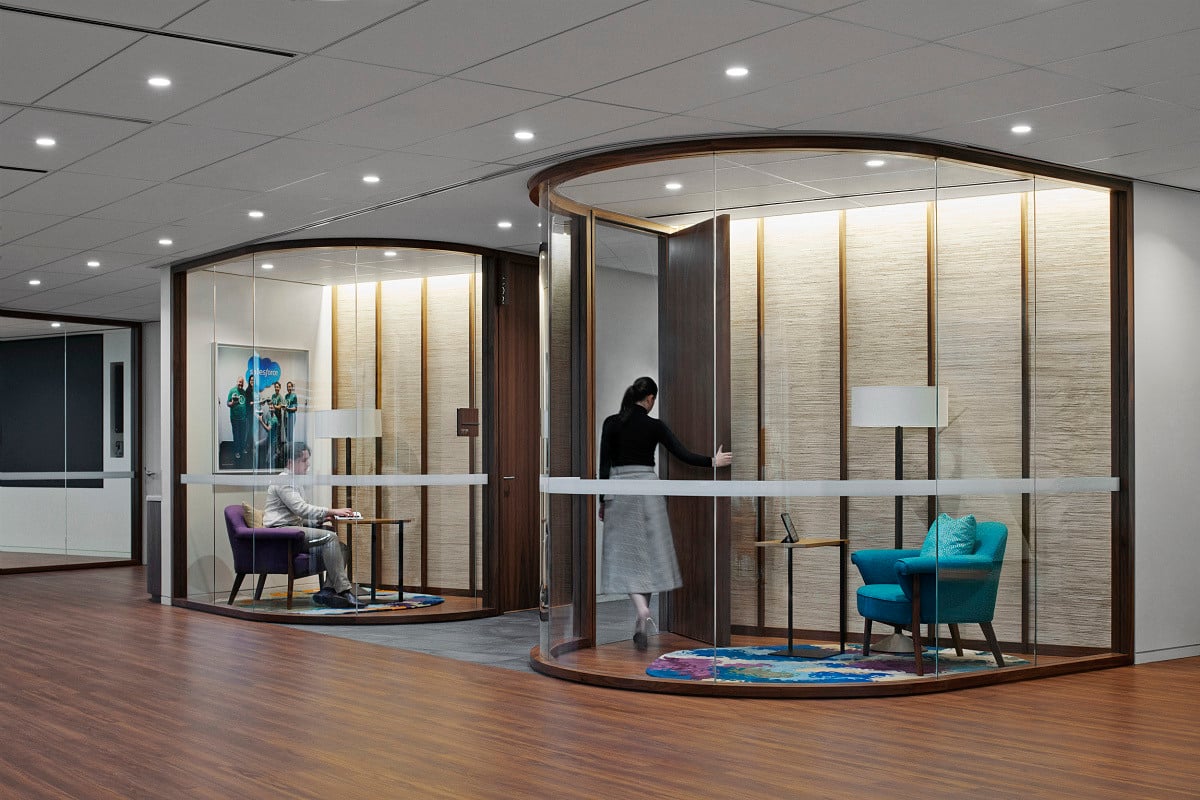
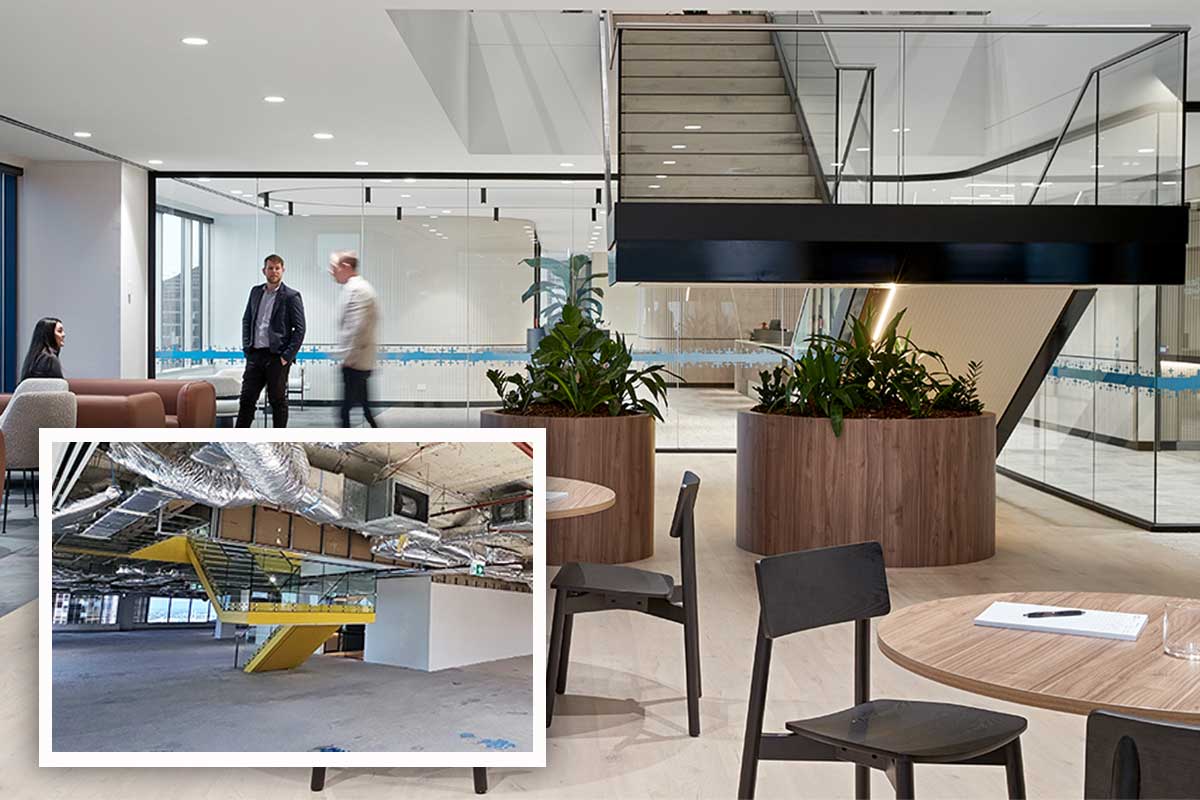
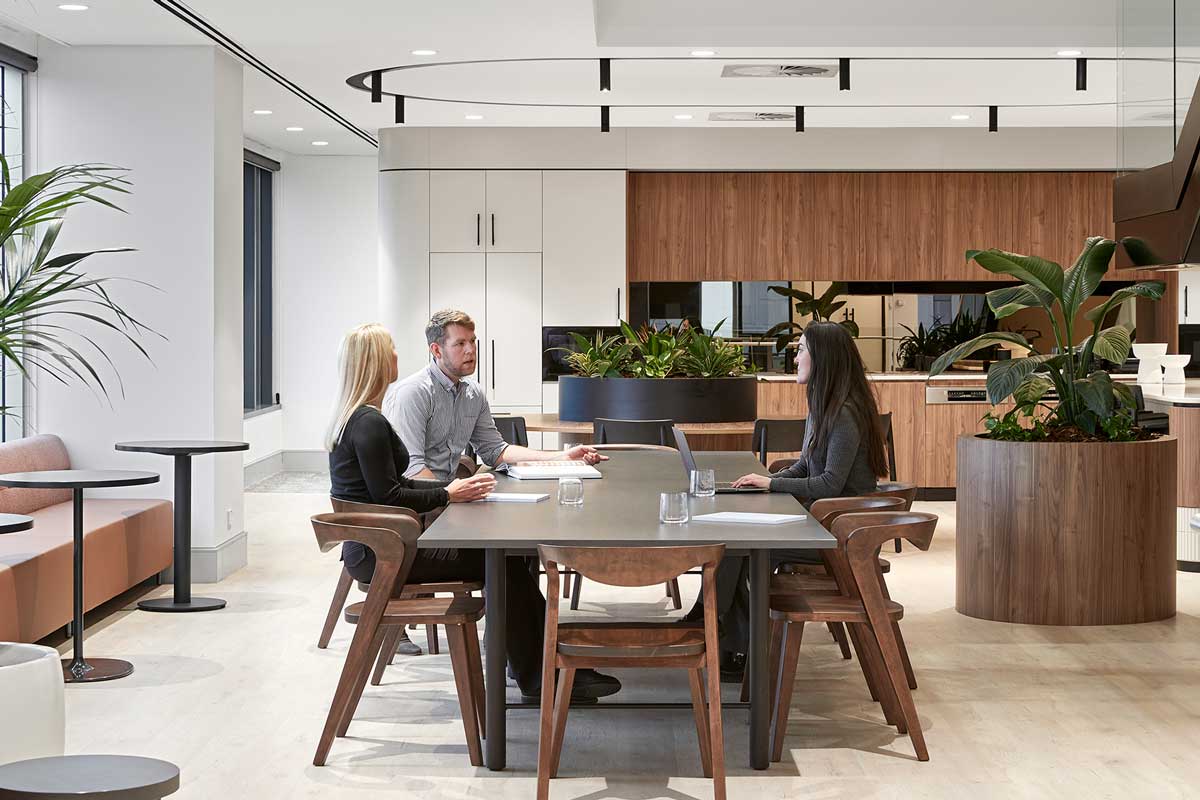
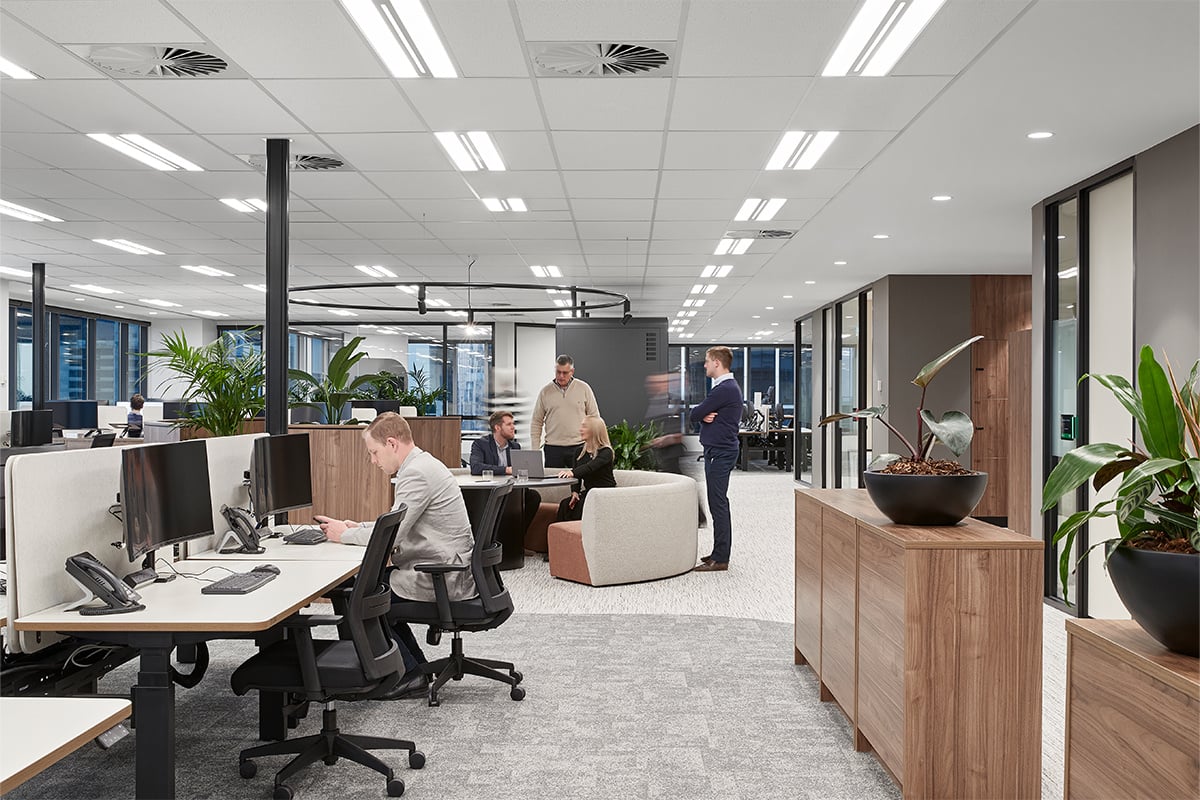
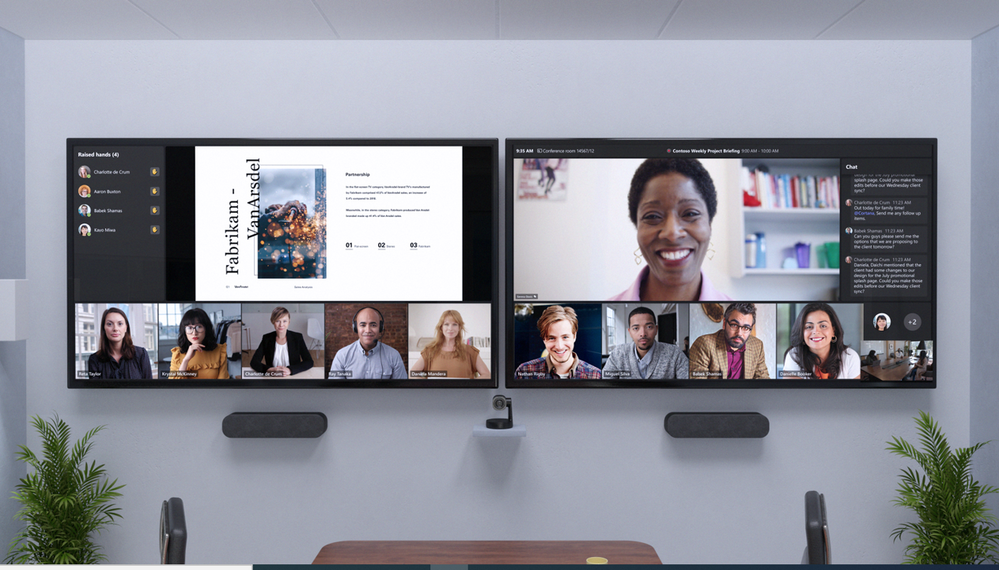
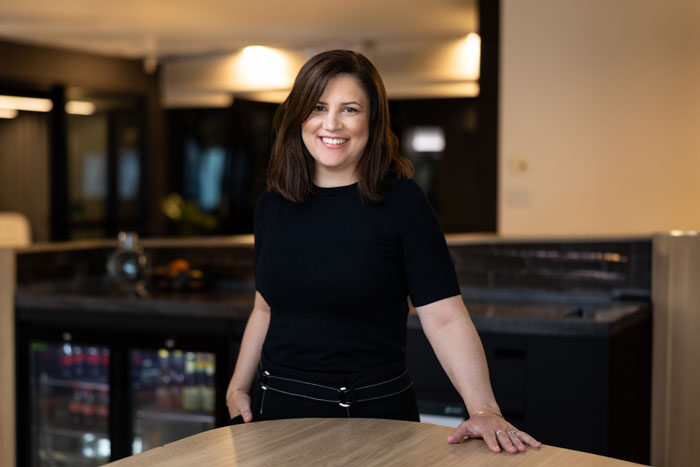
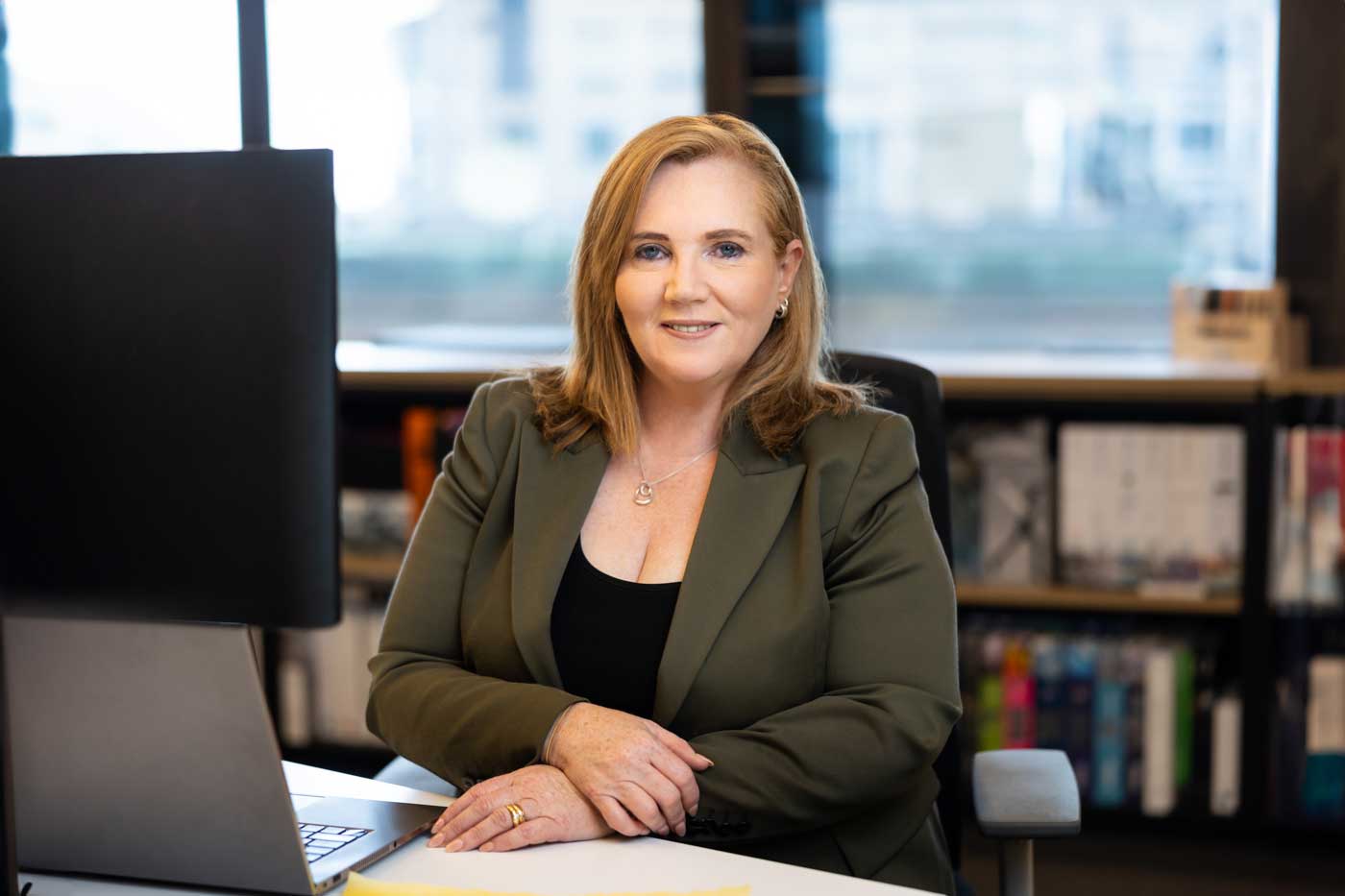
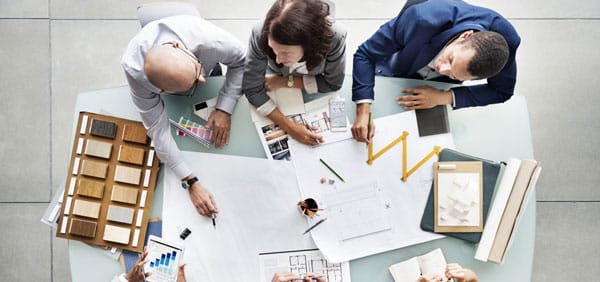




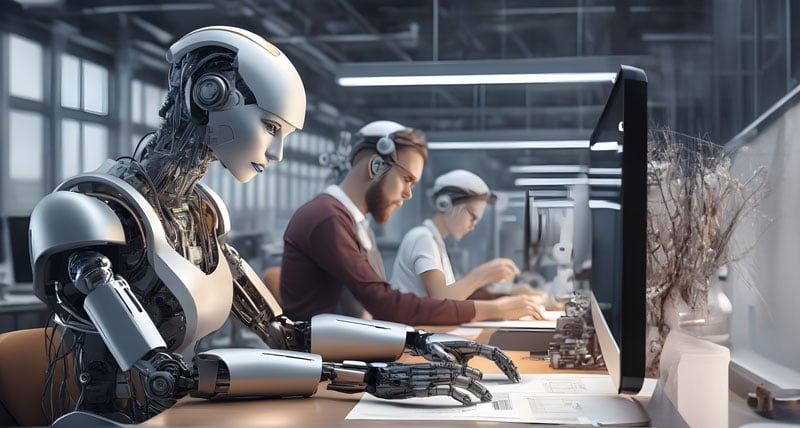
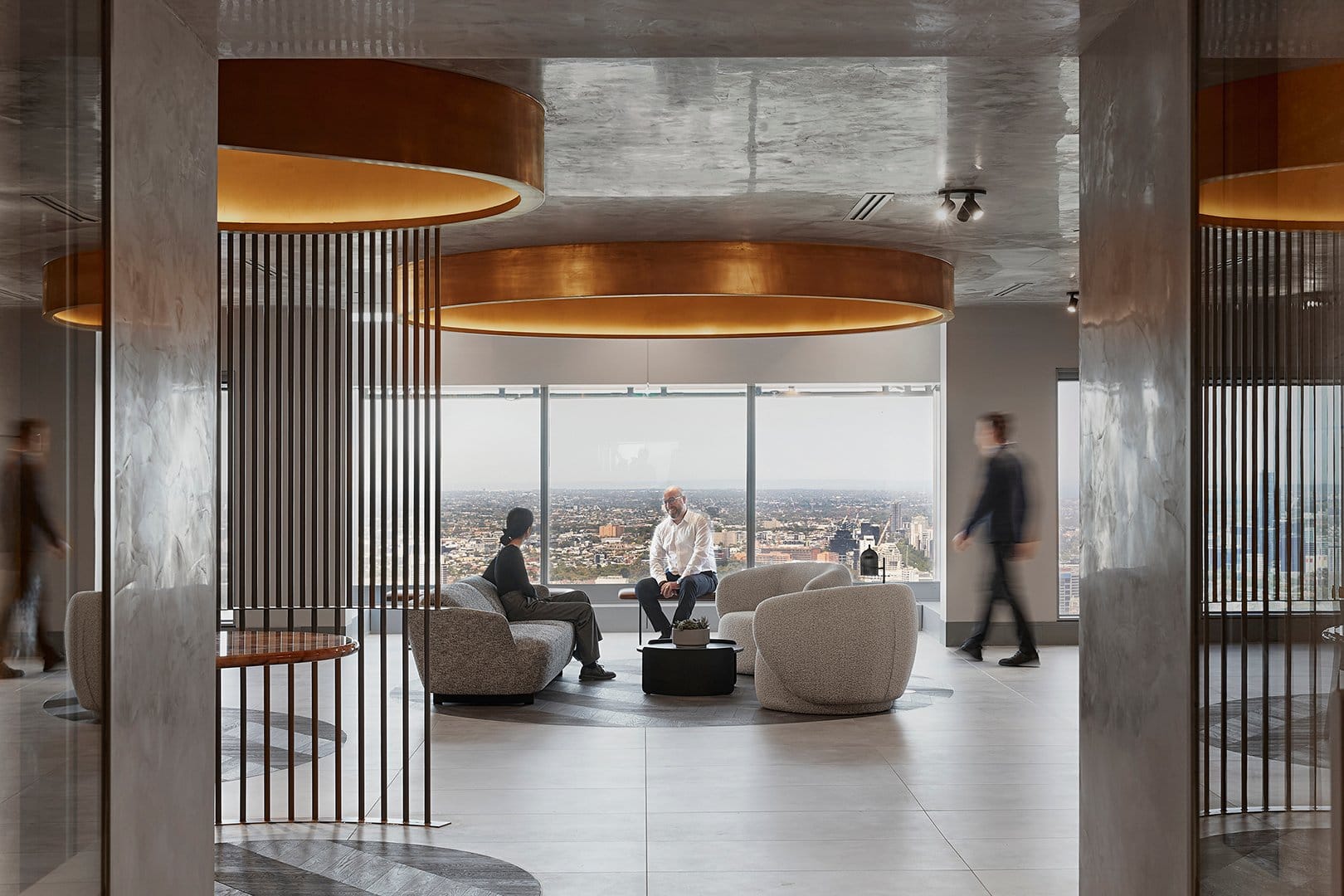
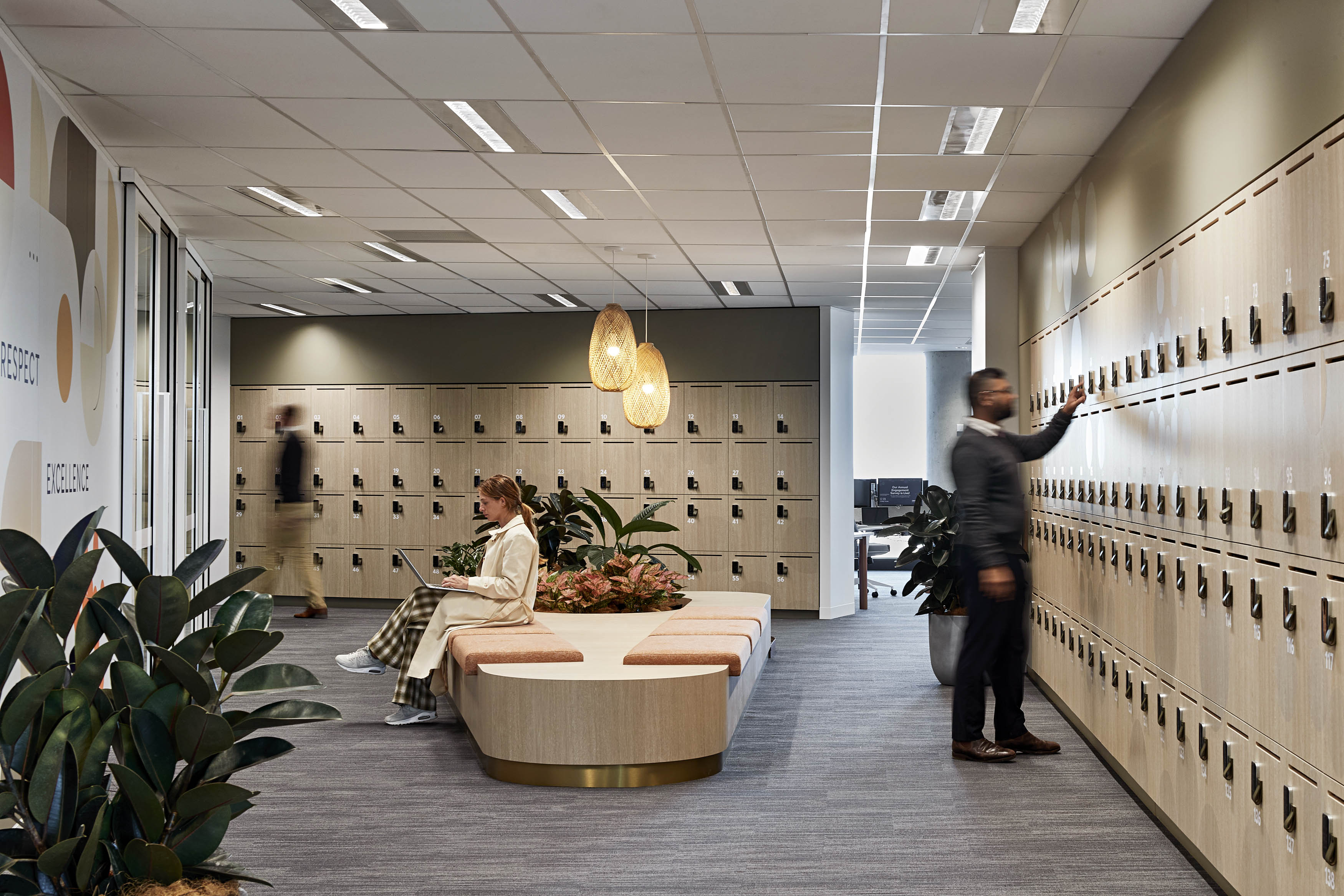
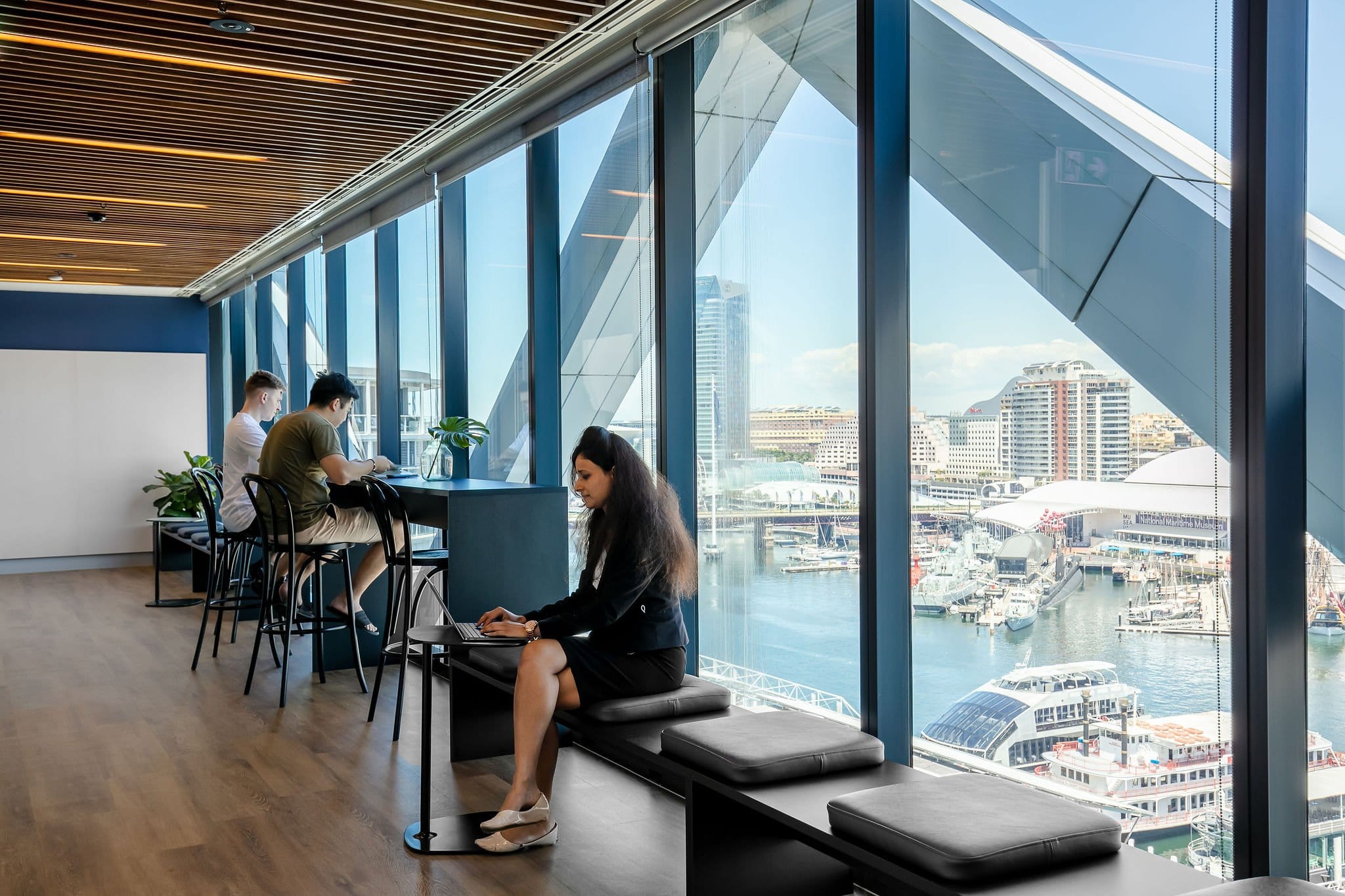
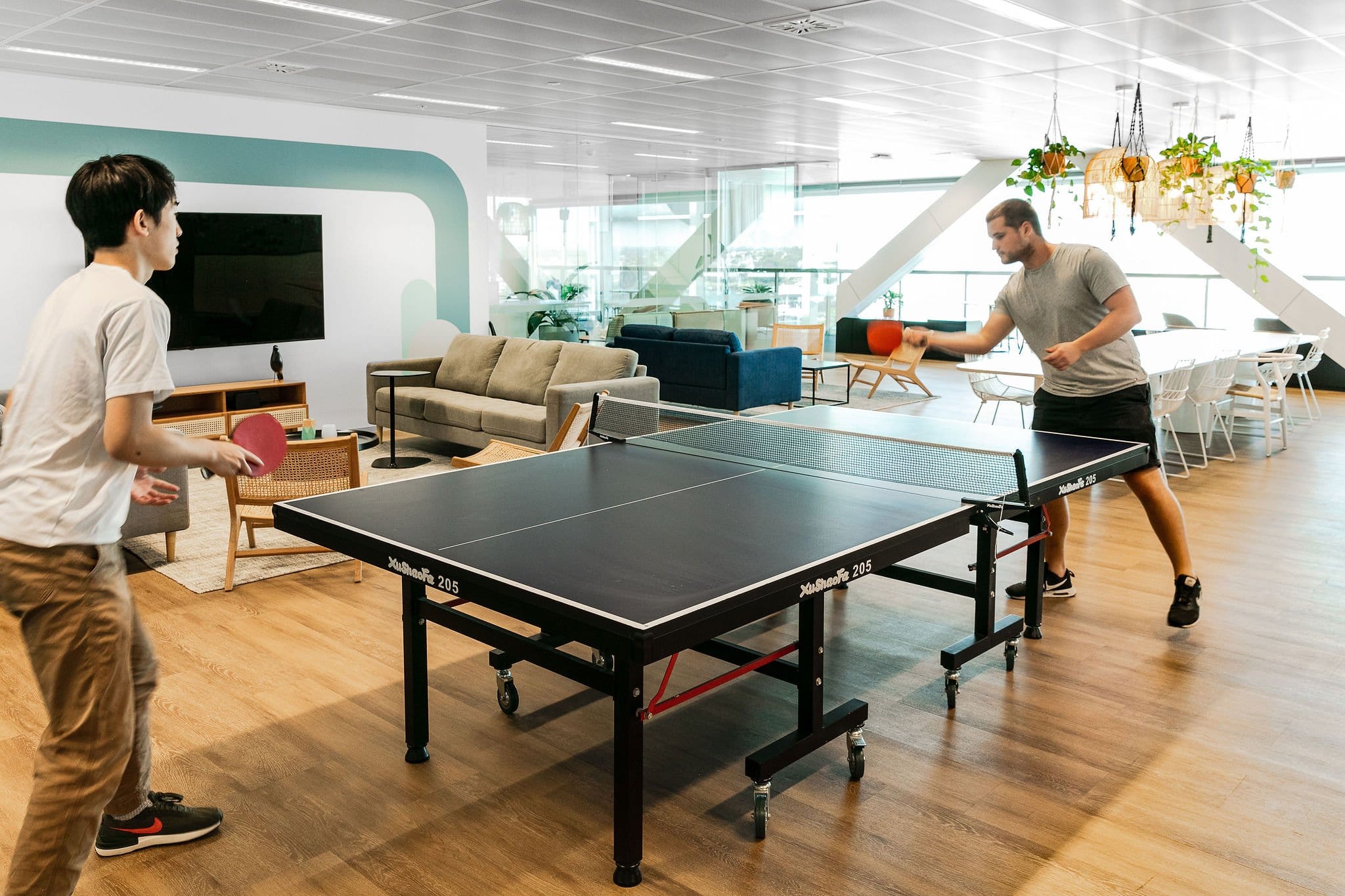
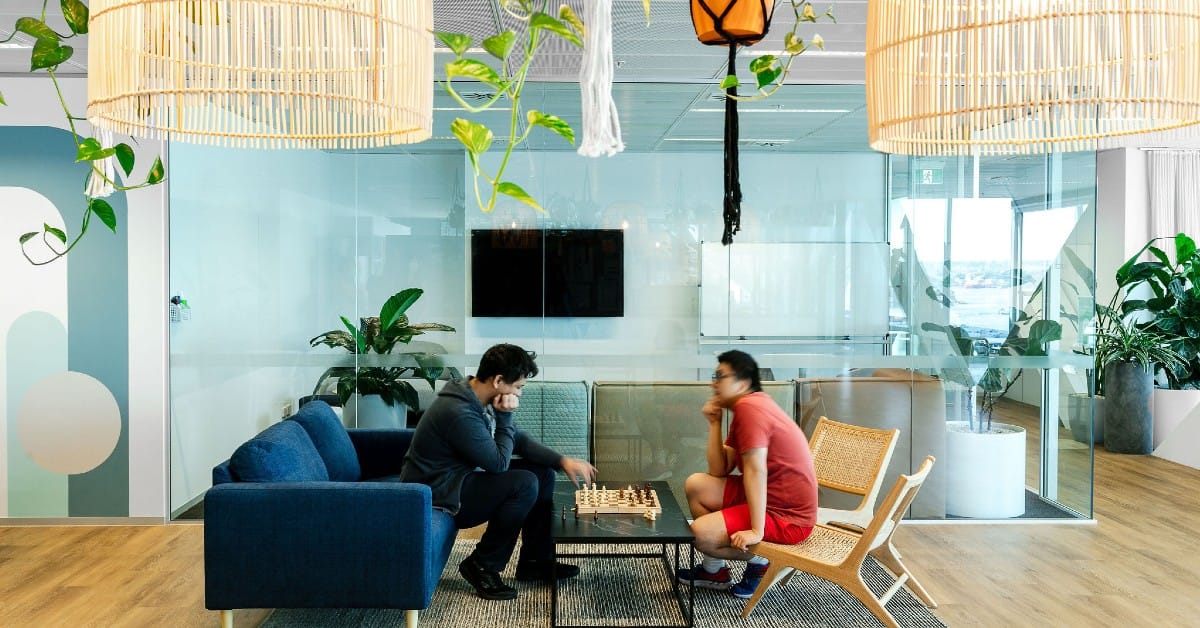

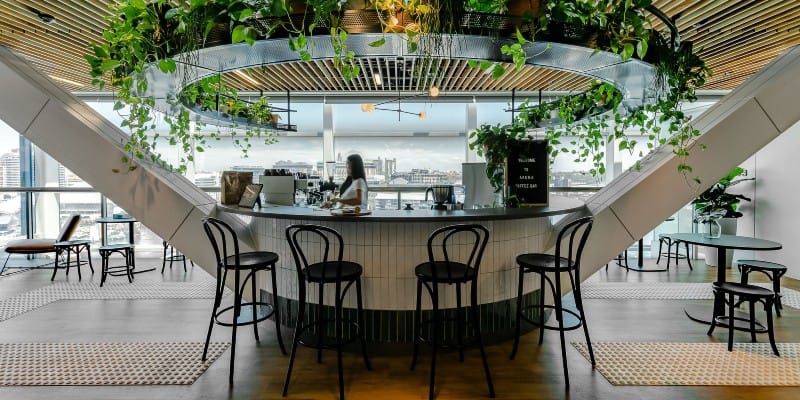

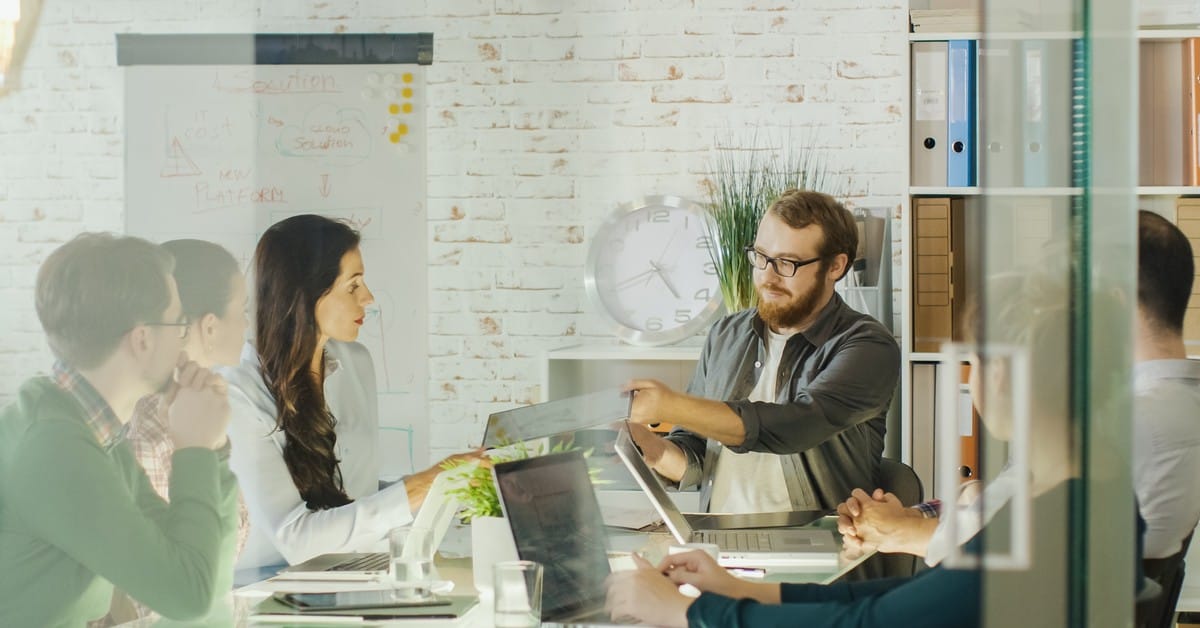

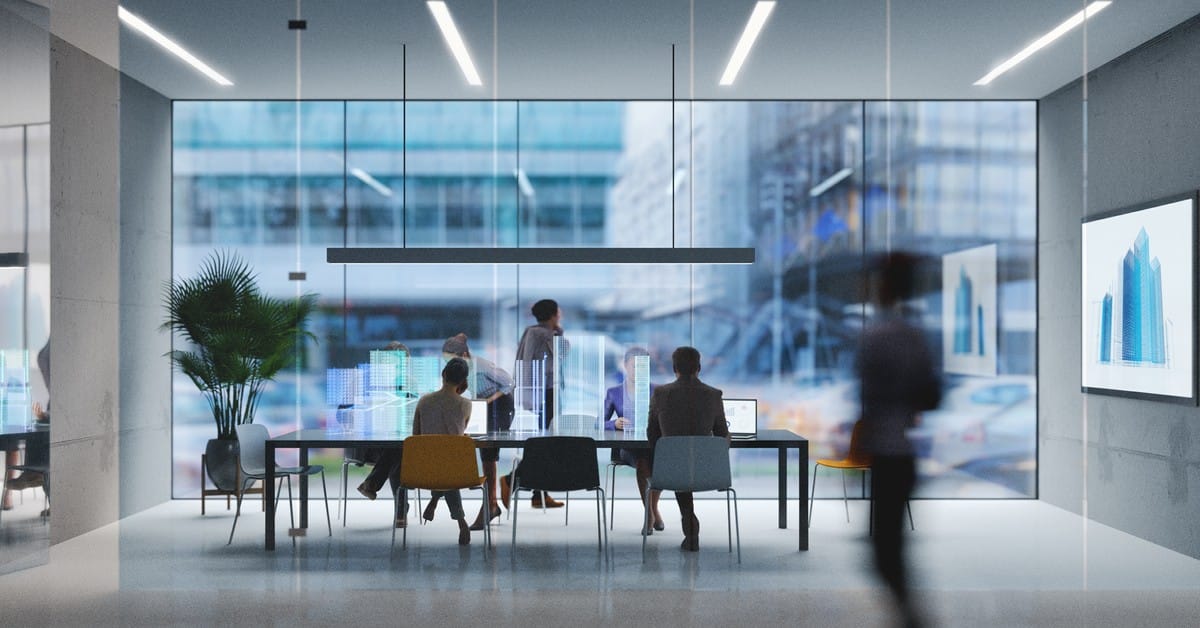

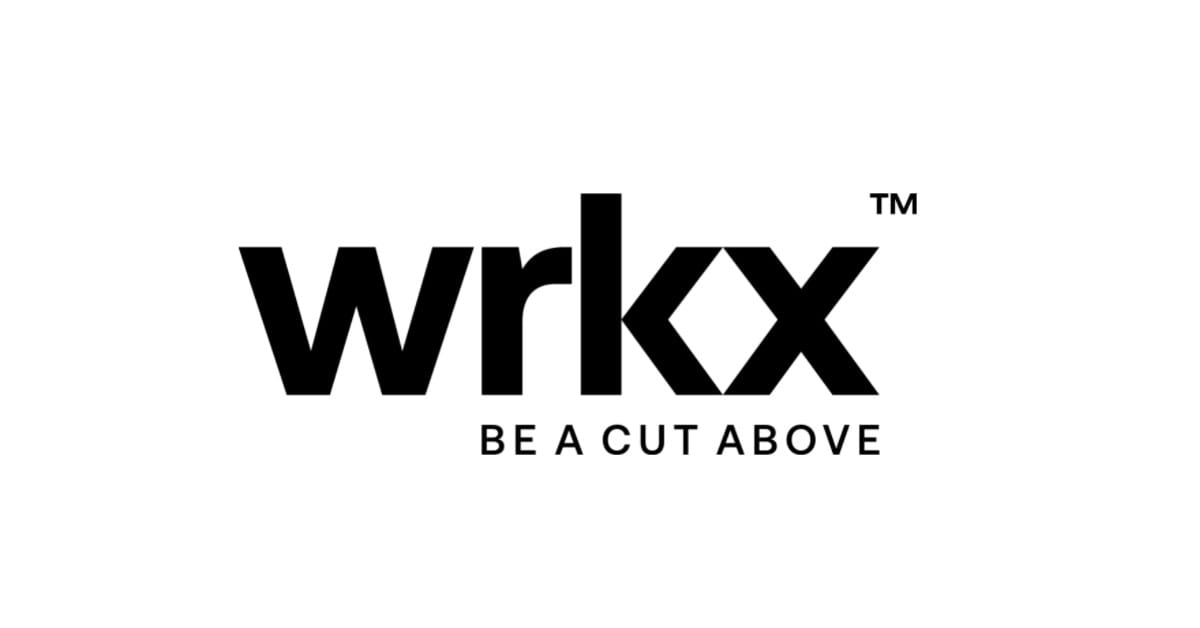

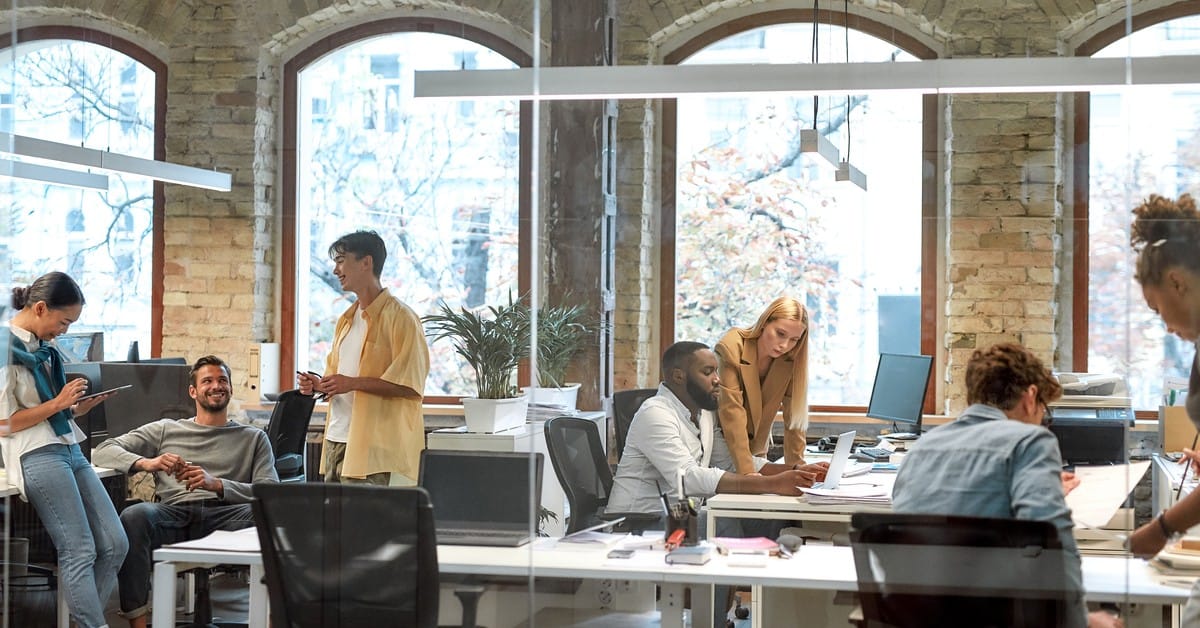
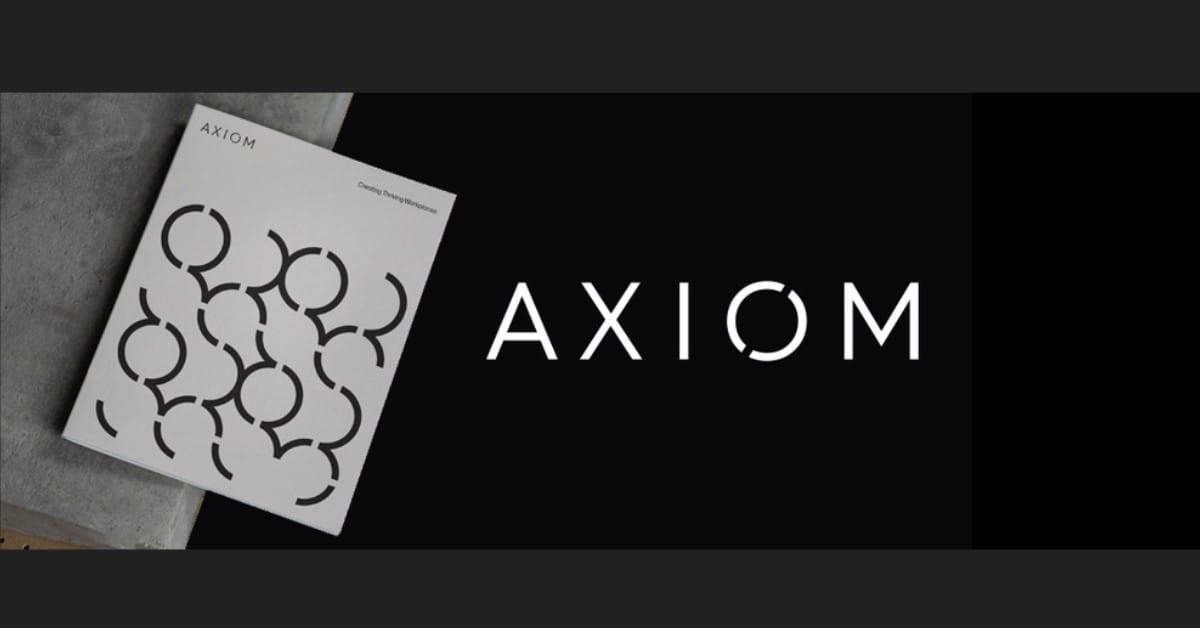
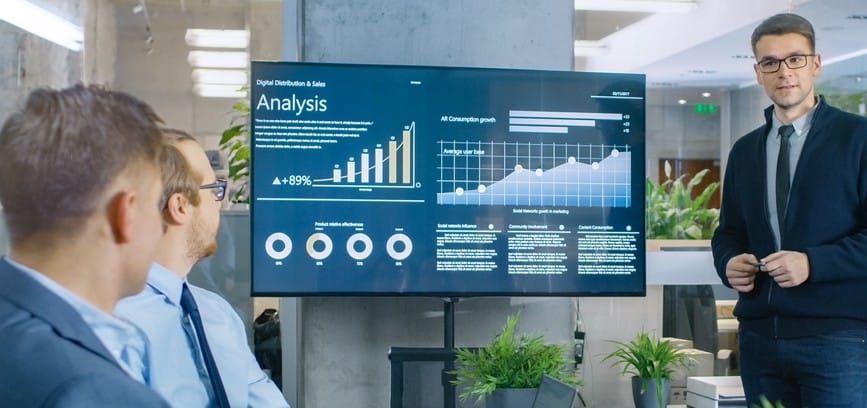

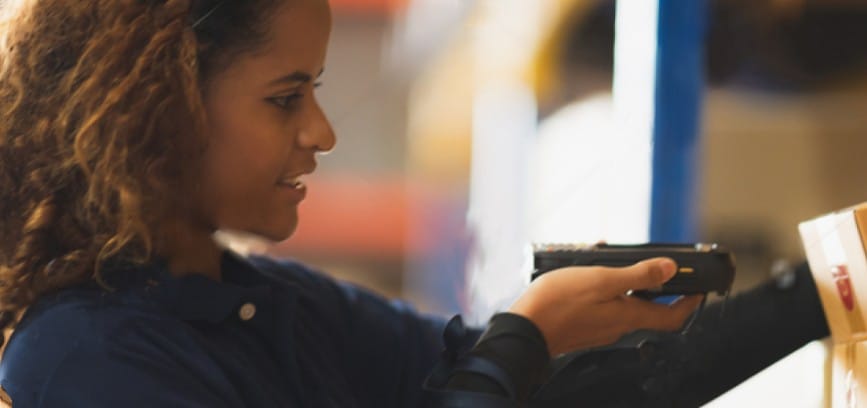
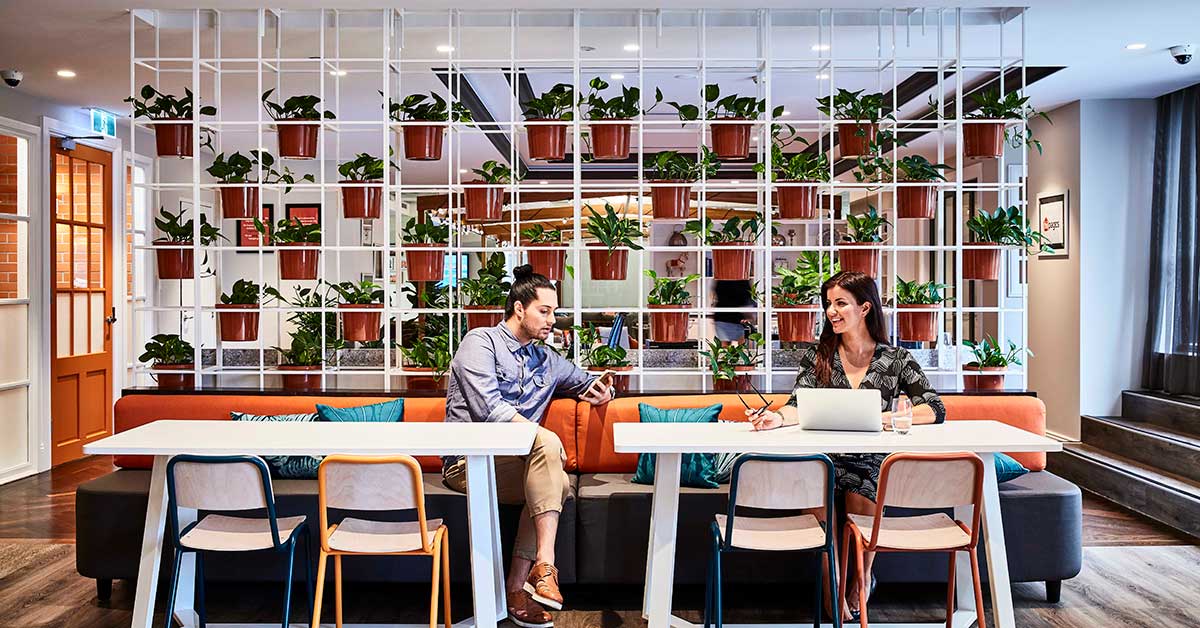






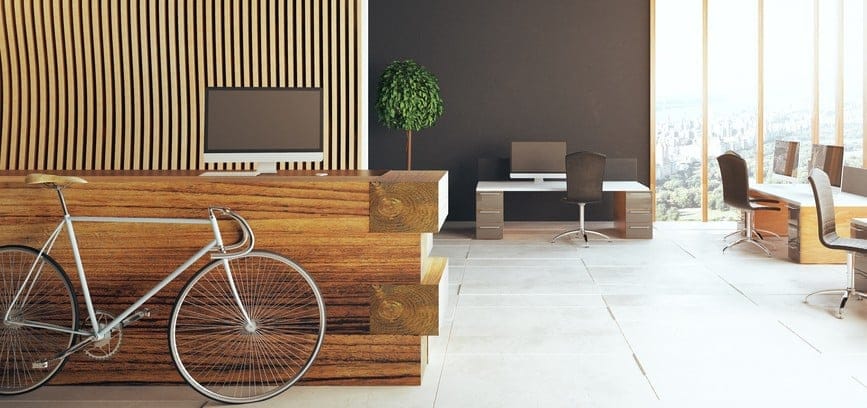
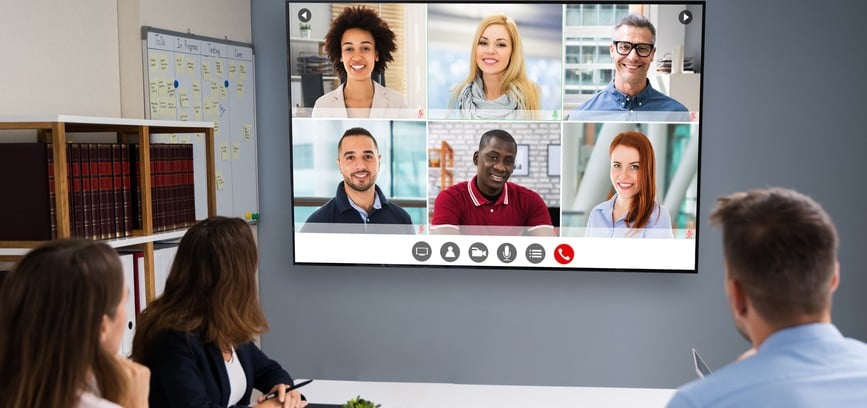

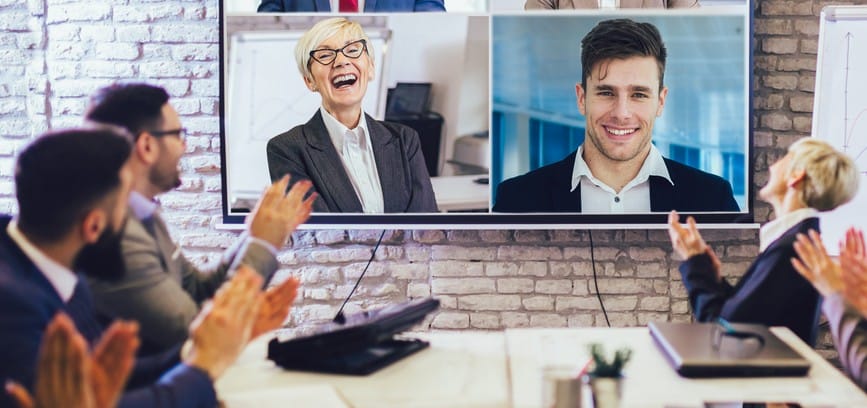

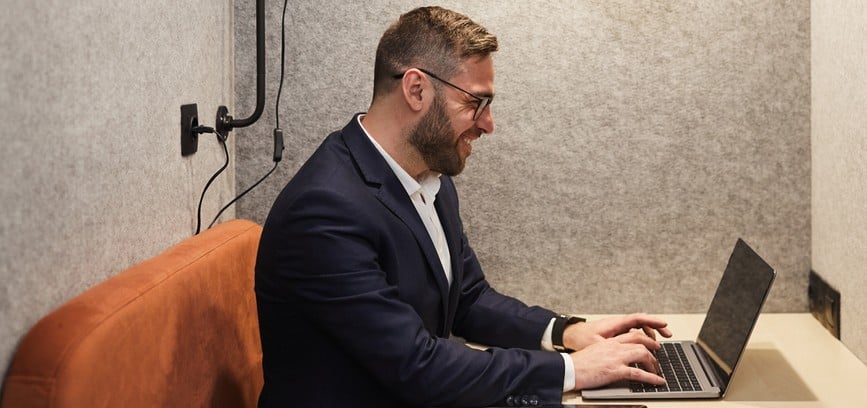
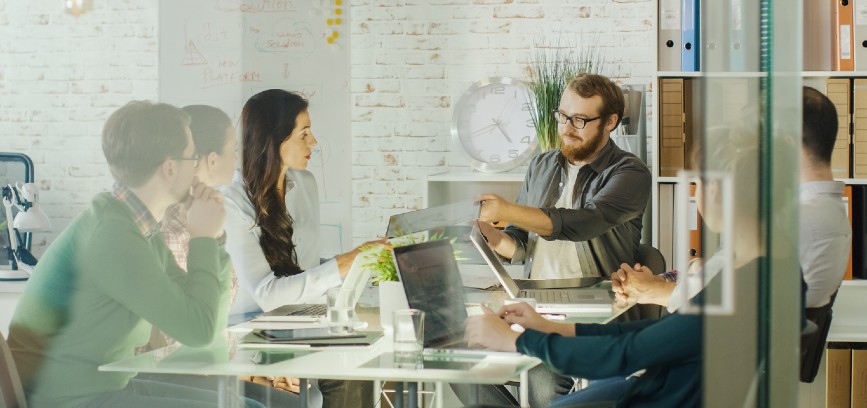


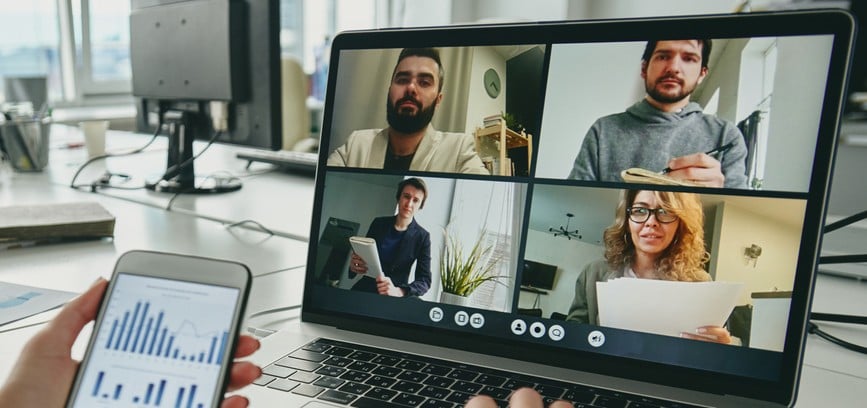
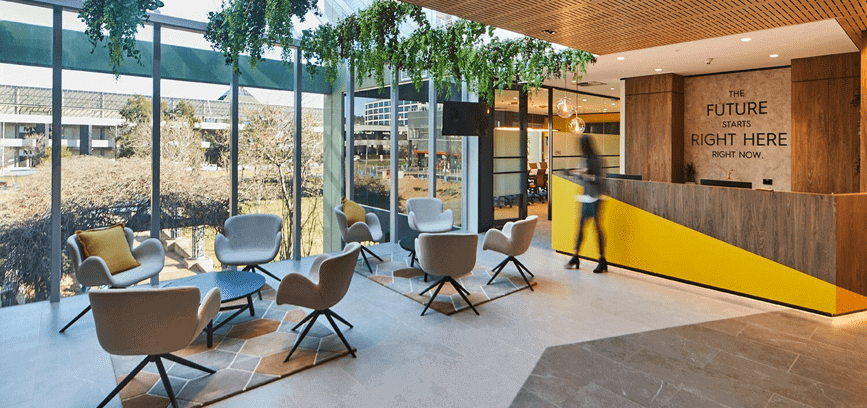
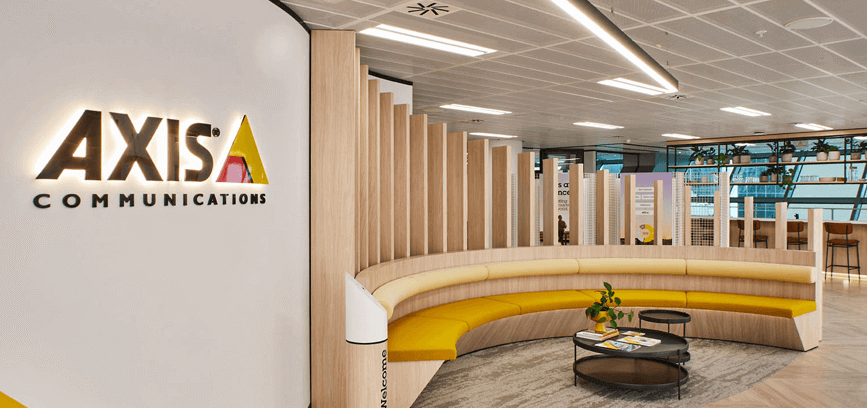

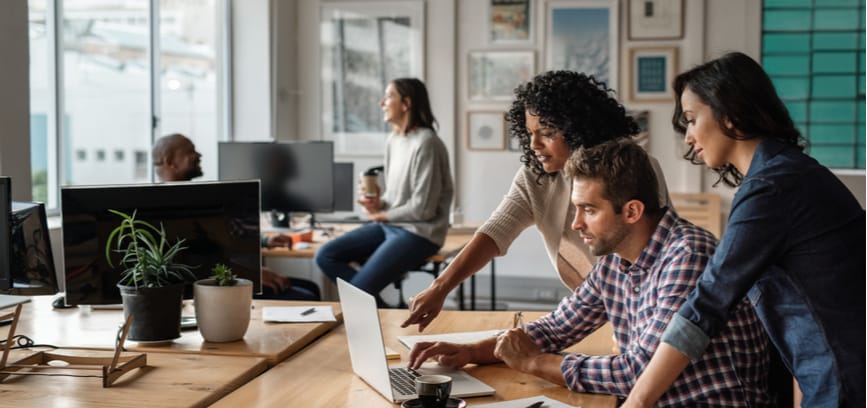



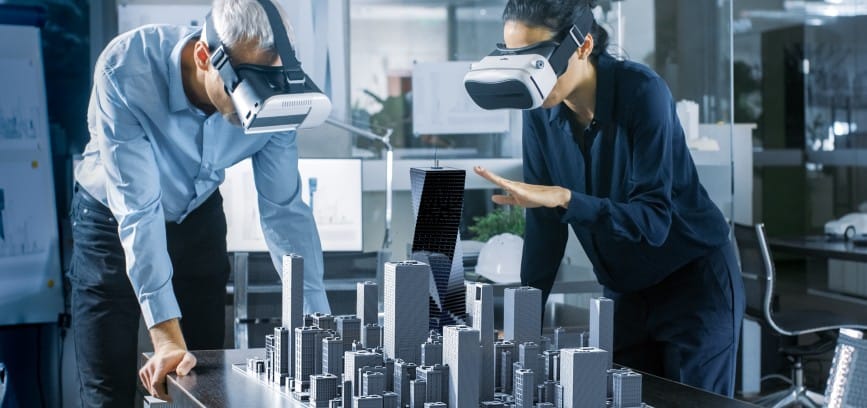
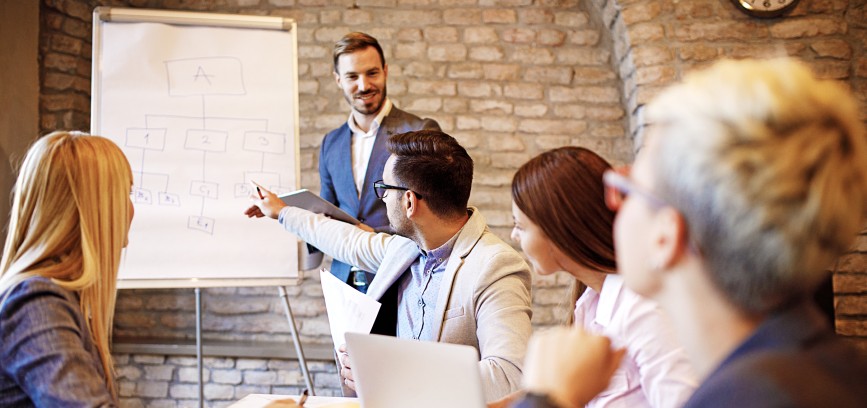


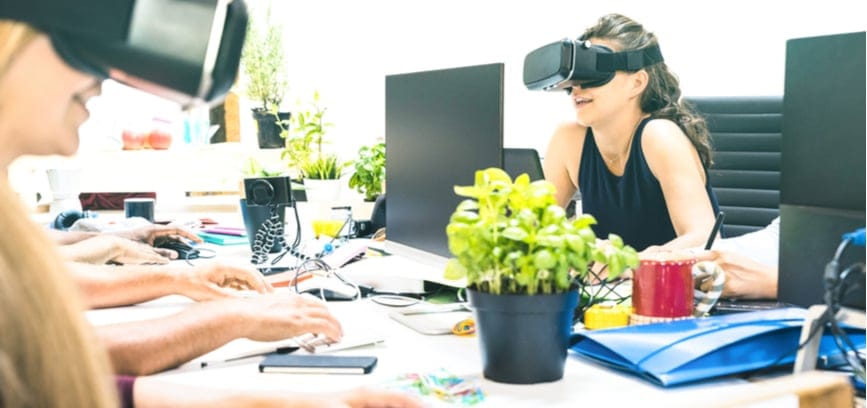
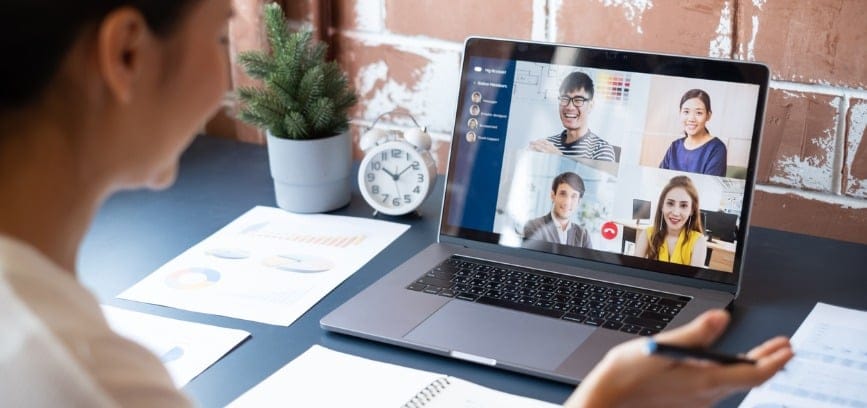



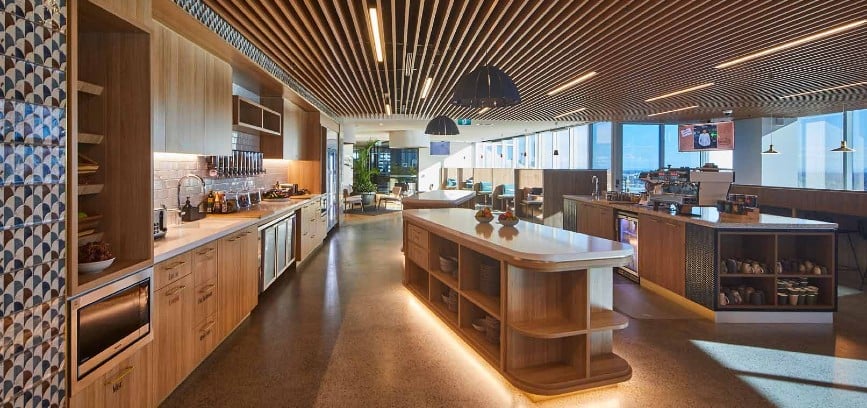
![5 signs you need a new office space [infographic]](https://www.axiomworkplaces.com.au/hubfs/Imported_Blog_Media/5-signs-you-need-new-office-space.jpg)

